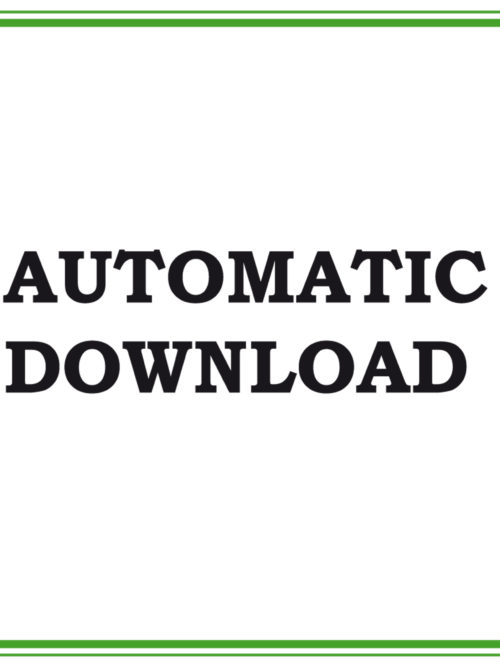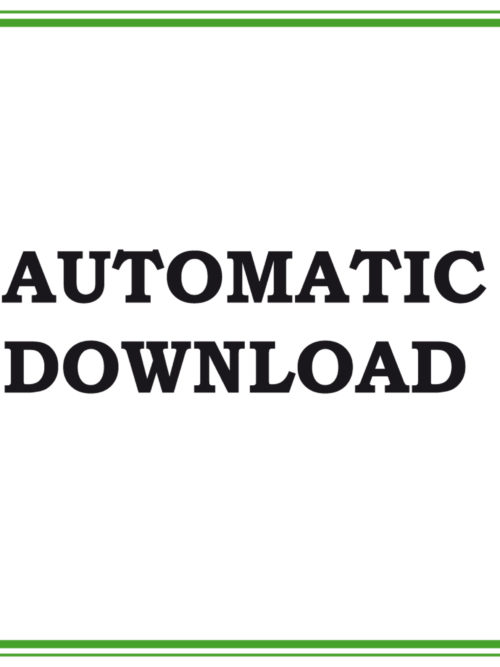-
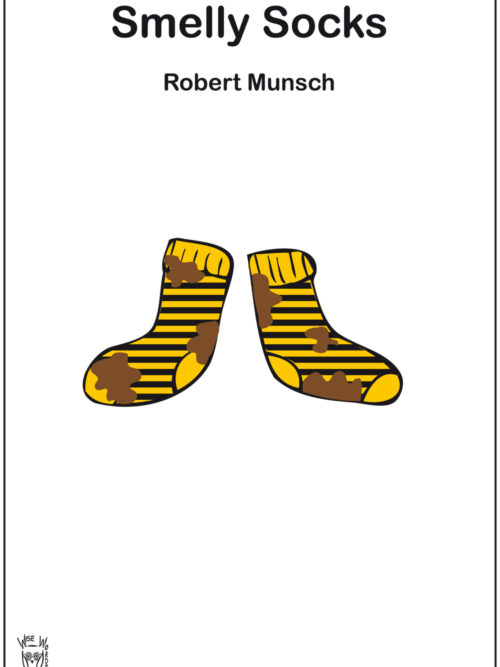 USING BOOKS TO ENHANCE A CHILD’S UNDERSTANDING AND INCREASE HIS/HER EXPRESSIVE LANGUAGE You can use a book to expand a child’s • vocabulary (rowed, forgotten, perfect, smell, raccoons, geese, skunk, beavers, splashed, promise) • understanding of concepts (across, slowly, through, wonderful, whole, dirty, nicer) • ability to understand questions Wise Words Scripts – offer clinicians, teachers and parents readily available questions designed specifically for each book. A script provides a variety of questions at each level of understanding for each page of the book. A teacher or clinician working with a group of children can tailor questions to each child’s language ability. This script and other available scripts have been based on Marion Blank’s Model of Classroom Language. Marion Blank recognised the importance of keeping questions and statements within a child’s level of understanding. The more concrete the statement or question, the easier it will be for the child to understand. As questions become more abstract, they become harder for children to answer. The Blank Model is divided into 4 levels of questioning, moving from the concrete (easiest) at Level 1 to the abstract (most difficult) at Level 4. All Wise Words Programs are sent as a download unless otherwise specified. To ship a USB, please add either Australian (A$20) or International (A$55) shipping to shopping cart.
USING BOOKS TO ENHANCE A CHILD’S UNDERSTANDING AND INCREASE HIS/HER EXPRESSIVE LANGUAGE You can use a book to expand a child’s • vocabulary (rowed, forgotten, perfect, smell, raccoons, geese, skunk, beavers, splashed, promise) • understanding of concepts (across, slowly, through, wonderful, whole, dirty, nicer) • ability to understand questions Wise Words Scripts – offer clinicians, teachers and parents readily available questions designed specifically for each book. A script provides a variety of questions at each level of understanding for each page of the book. A teacher or clinician working with a group of children can tailor questions to each child’s language ability. This script and other available scripts have been based on Marion Blank’s Model of Classroom Language. Marion Blank recognised the importance of keeping questions and statements within a child’s level of understanding. The more concrete the statement or question, the easier it will be for the child to understand. As questions become more abstract, they become harder for children to answer. The Blank Model is divided into 4 levels of questioning, moving from the concrete (easiest) at Level 1 to the abstract (most difficult) at Level 4. All Wise Words Programs are sent as a download unless otherwise specified. To ship a USB, please add either Australian (A$20) or International (A$55) shipping to shopping cart. -
Sale!
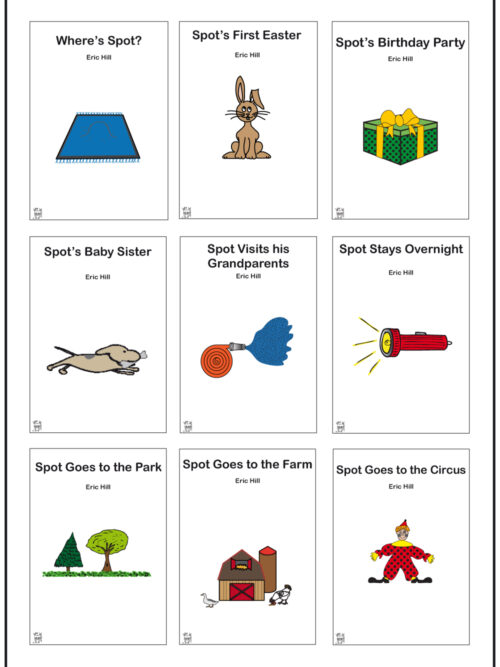 THE SPOT PACKAGE includes 13 books … • Where’s Spot? • Spot Goes to the Farm • Spot’s Birthday Party • Spot Visits his Grandparents • Spot’s Baby Sister • Spot Stays Overnight • Spot Goes to School • Spot Bakes a Cake • Spot’s First Easter • Spot Goes to the Park • Spot Goes to a Party • Spot Goes to the Circus • Spot Goes on Holiday These scripts have been based on Marion Blank’s Model of Classroom Language. Marion Blank recognised the importance of keeping questions and statements within a child’s level of understanding. The more concrete the statement or question, the easier it will be for the child to understand. As questions become more abstract, they become harder for children to answer. The Blank Model is divided into 4 levels of questioning, moving from the concrete (easiest) at Level 1 to the abstract (most difficult) at Level 4.
THE SPOT PACKAGE includes 13 books … • Where’s Spot? • Spot Goes to the Farm • Spot’s Birthday Party • Spot Visits his Grandparents • Spot’s Baby Sister • Spot Stays Overnight • Spot Goes to School • Spot Bakes a Cake • Spot’s First Easter • Spot Goes to the Park • Spot Goes to a Party • Spot Goes to the Circus • Spot Goes on Holiday These scripts have been based on Marion Blank’s Model of Classroom Language. Marion Blank recognised the importance of keeping questions and statements within a child’s level of understanding. The more concrete the statement or question, the easier it will be for the child to understand. As questions become more abstract, they become harder for children to answer. The Blank Model is divided into 4 levels of questioning, moving from the concrete (easiest) at Level 1 to the abstract (most difficult) at Level 4. -
Sale!
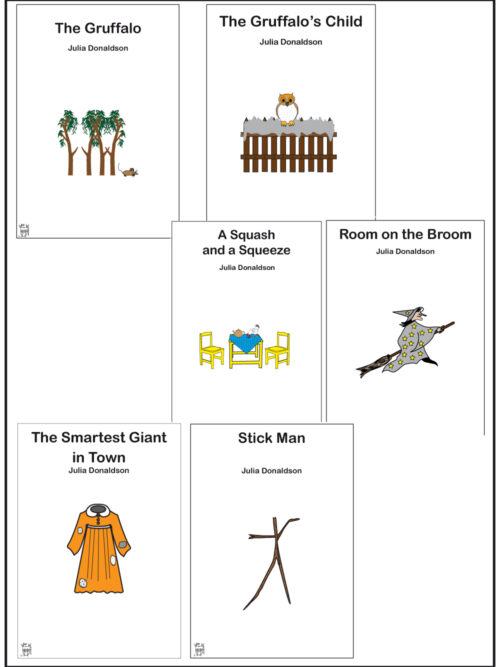
THE JULIA DONALDSON PACKAGE includes 6 books … • The Gruffalo • The Gruffalo’s Child • A Squash and a Squeeze • Room on the Broom • The Smartest Giant in Town • Stick Man
These scripts have been based on Marion Blank’s Model of Classroom Language. Marion Blank recognised the importance of keeping questions and statements within a child’s level of understanding. The more concrete the statement or question, the easier it will be for the child to understand. As questions become more abstract, they become harder for children to answer. The Blank Model is divided into 4 levels of questioning, moving from the concrete (easiest) at Level 1 to the abstract (most difficult) at Level 4.
-
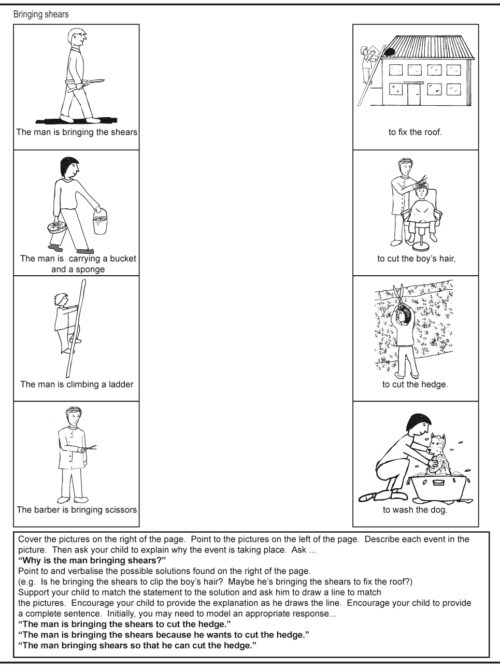
Level 4
Explaining the Reason for an Action Why is the boy carrying a surfboard? Why is the boy carrying a present? Why is the girl holding a spoon? Why is the lady pushing the trolley? This program targets Level 4 of Marion Blank’s ‘Model of Classroom Language’. Working through the activities provided in this program will increase your child’s understanding of ‘Why?’ questions’. These tasks will help to establish his ability to problem solve and offer explanations for actions. This program can be used with both readers and non-readers alike. Questions are used to guide your child through the thinking process so that he/she will reach the appropriate conclusion without being provided with the answer. It is important for the parent, teacher or clinician to lead the child towards the salient features of the presented problem. It may become necessary for the adult to break down the problem scenario into smaller parts to give the child the opportunity to understand. It is then essential to talk more, at a simple level, in language that the child understands. Rephrasing the information will ensure that the child is able to make inferences, understand the question and then offer an appropriate response. -
Sale!
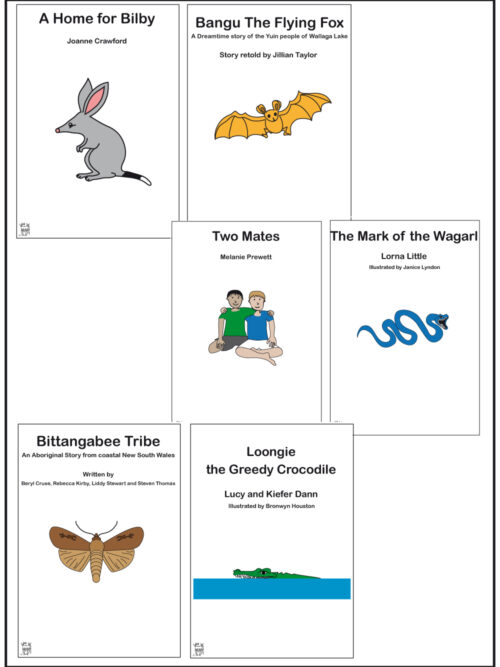 Wise Words indigenous materials have been devised to support parents, teachers and clinicians who may find it challenging to teach indigenous content because of concerns that they may not have the knowledge or understanding to ensure that the books, their stories and the complexity of the information is presented in a respectful and appropriate manner. With thanks to my editors Tara Lewis an Iman woman from the Taroom country of Western Queensland and Joedie Lawler a Biripi woman from Taree. Both Tara and Joedie ensured that the materials respected Aboriginal and Torres Strait Islander histories and were culturally appropriate. I am grateful for their input. Wise Words Scripts - offer clinicians, teachers and parents readily available questions designed specifically for each book. A script provides a variety of questions at each level of understanding for each page of the book. A teacher or clinician working with a group of children can tailor questions to each child's language ability. This script and other available scripts have been based on Marion Blank's Model of Classroom Language.
Wise Words indigenous materials have been devised to support parents, teachers and clinicians who may find it challenging to teach indigenous content because of concerns that they may not have the knowledge or understanding to ensure that the books, their stories and the complexity of the information is presented in a respectful and appropriate manner. With thanks to my editors Tara Lewis an Iman woman from the Taroom country of Western Queensland and Joedie Lawler a Biripi woman from Taree. Both Tara and Joedie ensured that the materials respected Aboriginal and Torres Strait Islander histories and were culturally appropriate. I am grateful for their input. Wise Words Scripts - offer clinicians, teachers and parents readily available questions designed specifically for each book. A script provides a variety of questions at each level of understanding for each page of the book. A teacher or clinician working with a group of children can tailor questions to each child's language ability. This script and other available scripts have been based on Marion Blank's Model of Classroom Language. -
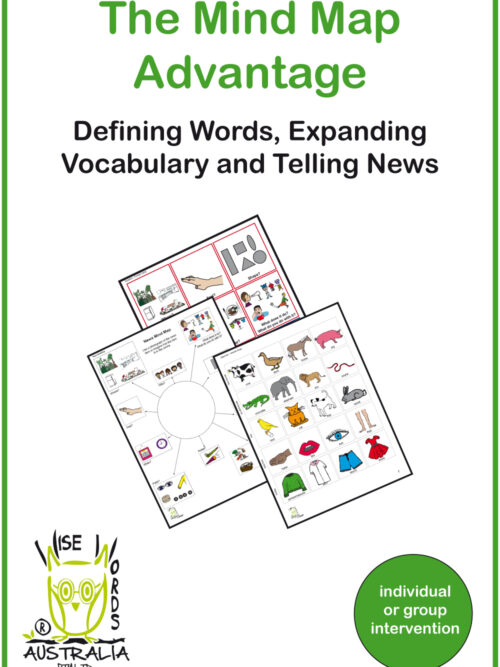
Level 3
The Mind Map Advantage can be used to support a child to understand and answer questions. At the same time, this resource will increase a child’s expressive language. The Mind Map Advantage targets Level 3 of the Blank Model. At this level, a child is required to deal with questions that are more complex and subtle than at earlier levels. For example, the child is not dealing with immediate experiences, as the objects may or may not be present. In order to achieve a correct response, he must use language to restructure and reorder his experiences whilst attending to less prominent information. Although a child may understand the posed question, he may be unable to formulate a definition. This resource uses a fixed framework. It will support children ...- when defining words
- when answering questions
- when asking questions
- who have word-finding difficulties
-
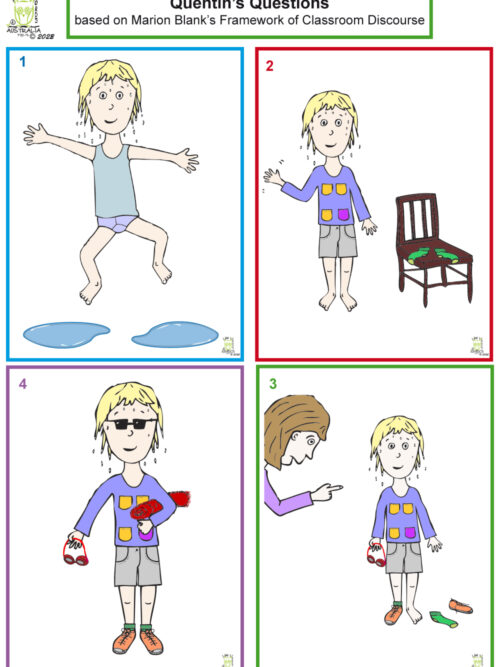 This product includes four picture cards depicting a young boy. Each illustration has accompanying questions at Levels 1, 2, 3 and 4 and are based on Marion Blank’s Model of Classroom Language. (Blank, Rose & Berlin 1978). The cards will provide teachers and clinicians with a useful tool where questions and statements can be quickly tailored to the needs of every child despite differing ages or abilities.
This product includes four picture cards depicting a young boy. Each illustration has accompanying questions at Levels 1, 2, 3 and 4 and are based on Marion Blank’s Model of Classroom Language. (Blank, Rose & Berlin 1978). The cards will provide teachers and clinicians with a useful tool where questions and statements can be quickly tailored to the needs of every child despite differing ages or abilities. -
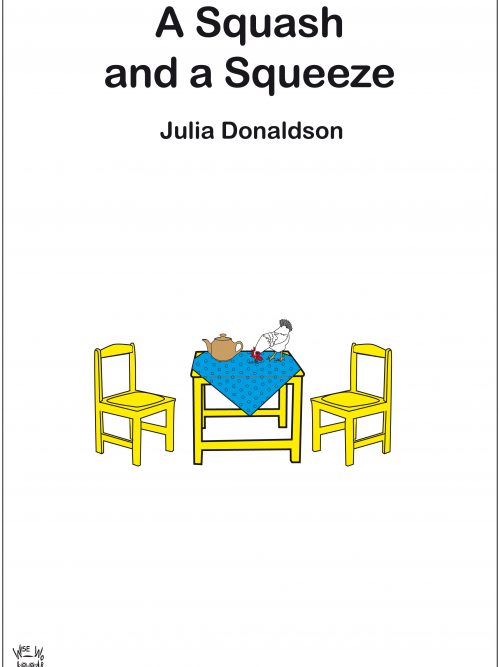 USING BOOKS TO ENHANCE A CHILD’S UNDERSTANDING AND INCREASE HIS/HER EXPRESSIVE LANGUAGE You can use a book to expand a child’s • vocabulary (frolics, jig, grumble, charged, larder, jug) • understanding of concepts (e.g. enormous, wise, curious, tiny, out) • ability to understand questions Wise Words Scripts – offer clinicians, teachers and parents readily available questions designed specifically for each book. A script provides a variety of questions at each level of understanding for each page of the book. A teacher or clinician working with a group of children can tailor questions to each child’s language ability. This script and other available scripts have been based on Marion Blank’s Model of Classroom Language. Marion Blank recognised the importance of keeping questions and statements within a child’s level of understanding. The more concrete the statement or question, the easier it will be for the child to understand. As questions become more abstract, they become harder for children to answer. The Blank Model is divided into 4 levels of questioning, moving from the concrete (easiest) at Level 1 to the abstract (most difficult) at Level 4. All Wise Words Programs are sent as a download unless otherwise specified. To ship a USB, please add either Australian (A$20) or International (A$55) shipping to shopping cart.
USING BOOKS TO ENHANCE A CHILD’S UNDERSTANDING AND INCREASE HIS/HER EXPRESSIVE LANGUAGE You can use a book to expand a child’s • vocabulary (frolics, jig, grumble, charged, larder, jug) • understanding of concepts (e.g. enormous, wise, curious, tiny, out) • ability to understand questions Wise Words Scripts – offer clinicians, teachers and parents readily available questions designed specifically for each book. A script provides a variety of questions at each level of understanding for each page of the book. A teacher or clinician working with a group of children can tailor questions to each child’s language ability. This script and other available scripts have been based on Marion Blank’s Model of Classroom Language. Marion Blank recognised the importance of keeping questions and statements within a child’s level of understanding. The more concrete the statement or question, the easier it will be for the child to understand. As questions become more abstract, they become harder for children to answer. The Blank Model is divided into 4 levels of questioning, moving from the concrete (easiest) at Level 1 to the abstract (most difficult) at Level 4. All Wise Words Programs are sent as a download unless otherwise specified. To ship a USB, please add either Australian (A$20) or International (A$55) shipping to shopping cart. -
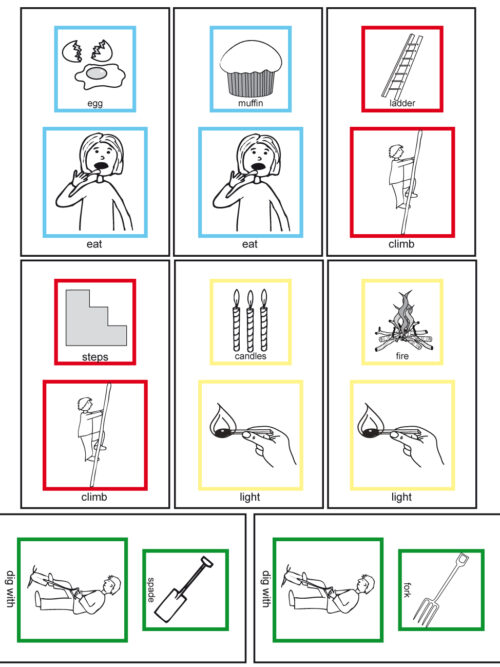
Level 2
Identifying objects according to their function/use Level 2 ““What do you use … for?” “What do you use to ...?” “What do you do with a ...?” “Find something that you can…” Scanning for an object defined by its function Level 2 “Find something that you can dig with.” “Show me something that I can use to ... .” “Point to the ones that I can drink.” “Touch the ones that you can drive.” Research indicates that we store and retrieve words more easily if they have been organised into ‘collections’. Two important ways that we can organise words are by ... Function - what we do with something (eat cake), what we use it for (cut with - scissors) or what it does (a bird flies). Semantic Class - A ‘word family’ includes groups such as food (cake, eggs, bread, cheese), wild animals (zebra, giraffe, lion, monkey), furniture (chair, bed, table, shelves). This program provides opportunities to increase your child’s verb vocabulary (action words - jump, dig, eat)..Acquisition of verbs is essential for language development as they help children combine words into phrases and sentences. Children with few verbs may go on to present with disordered language. Late talking toddlers typically have limited to no verbs in their vocabulary. Unlike objects or names (ball, dog, Mum, Hugo), verbs (run, eat, push) are transient and are more difficult for a young child to acquire. -
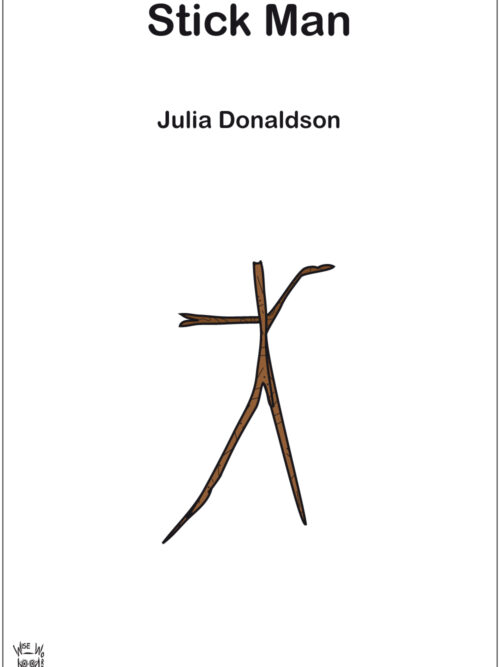 USING BOOKS TO ENHANCE A CHILD’S UNDERSTANDING AND INCREASE HIS/HER EXPRESSIVE LANGUAGE You can use a book to expand a child’s • Vocabulary (doze, clattering, jog, twirl, deserted, lead, frost, beware, mast, knight, foam) • Understanding of concepts (weary, early, excellent, overhead, lonely, faster, out) • Ability to understand questions Wise Words Scripts – offer clinicians, teachers and parents readily available questions designed specifically for each book. A script provides a variety of questions at each level of understanding for each page of the book. A teacher or clinician working with a group of children can tailor questions to each child’s language ability. This script and other available scripts have been based on Marion Blank’s Model of Classroom Language. Marion Blank recognised the importance of keeping questions and statements within a child’s level of understanding. The more concrete the statement or question, the easier it will be for the child to understand. As questions become more abstract, they become harder for children to answer. The Blank Model is divided into 4 levels of questioning, moving from the concrete (easiest) at Level 1 to the abstract (most difficult) at Level 4. All Wise Words Programs are sent as a download unless otherwise specified. To ship a USB, please add either Australian (A$20) or International (A$55) shipping to shopping cart.
USING BOOKS TO ENHANCE A CHILD’S UNDERSTANDING AND INCREASE HIS/HER EXPRESSIVE LANGUAGE You can use a book to expand a child’s • Vocabulary (doze, clattering, jog, twirl, deserted, lead, frost, beware, mast, knight, foam) • Understanding of concepts (weary, early, excellent, overhead, lonely, faster, out) • Ability to understand questions Wise Words Scripts – offer clinicians, teachers and parents readily available questions designed specifically for each book. A script provides a variety of questions at each level of understanding for each page of the book. A teacher or clinician working with a group of children can tailor questions to each child’s language ability. This script and other available scripts have been based on Marion Blank’s Model of Classroom Language. Marion Blank recognised the importance of keeping questions and statements within a child’s level of understanding. The more concrete the statement or question, the easier it will be for the child to understand. As questions become more abstract, they become harder for children to answer. The Blank Model is divided into 4 levels of questioning, moving from the concrete (easiest) at Level 1 to the abstract (most difficult) at Level 4. All Wise Words Programs are sent as a download unless otherwise specified. To ship a USB, please add either Australian (A$20) or International (A$55) shipping to shopping cart. -
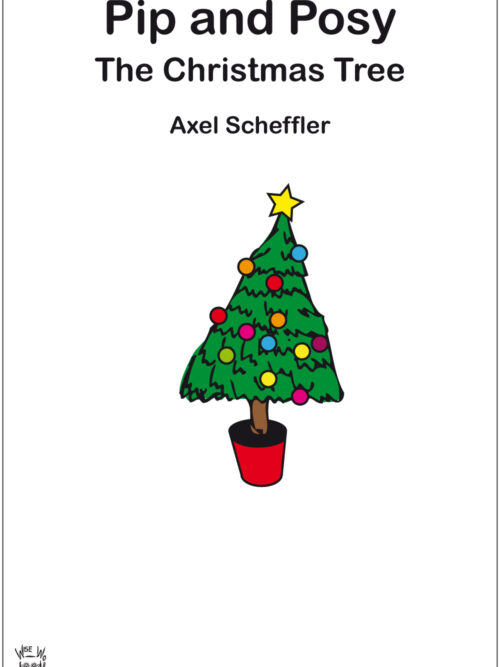 USING BOOKS TO ENHANCE A CHILD’S UNDERSTANDING AND INCREASE HIS/HER EXPRESSIVE LANGUAGE You can use a book to expand a child’s • Vocabulary (fetch, present, rainbow, Christmas, noticed, candy canes) • Understanding of concepts (beautiful, fresh, better, pretty) • Ability to understand questions Wise Words Scripts – offer clinicians, teachers and parents readily available questions designed specifically for each book. A script provides a variety of questions at each level of understanding for each page of the book. A teacher or clinician working with a group of children can tailor questions to each child’s language ability. This script and other available scripts have been based on Marion Blank’s Model of Classroom Language. Marion Blank recognised the importance of keeping questions and statements within a child’s level of understanding. The more concrete the statement or question, the easier it will be for the child to understand. As questions become more abstract, they become harder for children to answer. The Blank Model is divided into 4 levels of questioning, moving from the concrete (easiest) at Level 1 to the abstract (most difficult) at Level 4. All Wise Words Programs are sent as a download unless otherwise specified. To ship a USB, please add either Australian (A$20) or International (A$55) shipping to shopping cart.
USING BOOKS TO ENHANCE A CHILD’S UNDERSTANDING AND INCREASE HIS/HER EXPRESSIVE LANGUAGE You can use a book to expand a child’s • Vocabulary (fetch, present, rainbow, Christmas, noticed, candy canes) • Understanding of concepts (beautiful, fresh, better, pretty) • Ability to understand questions Wise Words Scripts – offer clinicians, teachers and parents readily available questions designed specifically for each book. A script provides a variety of questions at each level of understanding for each page of the book. A teacher or clinician working with a group of children can tailor questions to each child’s language ability. This script and other available scripts have been based on Marion Blank’s Model of Classroom Language. Marion Blank recognised the importance of keeping questions and statements within a child’s level of understanding. The more concrete the statement or question, the easier it will be for the child to understand. As questions become more abstract, they become harder for children to answer. The Blank Model is divided into 4 levels of questioning, moving from the concrete (easiest) at Level 1 to the abstract (most difficult) at Level 4. All Wise Words Programs are sent as a download unless otherwise specified. To ship a USB, please add either Australian (A$20) or International (A$55) shipping to shopping cart. -
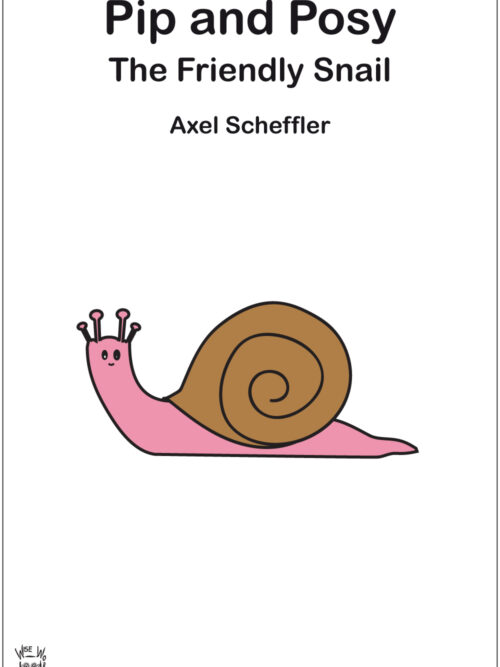 USING BOOKS TO ENHANCE A CHILD’S UNDERSTANDING AND INCREASE HIS/HER EXPRESSIVE LANGUAGE You can use a book to expand a child’s • Vocabulary (slide, snail, disappeared, shouted, raked, planted, sprinkled, roared, saved) • Understanding of concepts (fun, friendly, noisy, quiet, happy, closer, loud) • Ability to understand questions Wise Words Scripts – offer clinicians, teachers and parents readily available questions designed specifically for each book. A script provides a variety of questions at each level of understanding for each page of the book. A teacher or clinician working with a group of children can tailor questions to each child’s language ability. This script and other available scripts have been based on Marion Blank’s Model of Classroom Language. Marion Blank recognised the importance of keeping questions and statements within a child’s level of understanding. The more concrete the statement or question, the easier it will be for the child to understand. As questions become more abstract, they become harder for children to answer. The Blank Model is divided into 4 levels of questioning, moving from the concrete (easiest) at Level 1 to the abstract (most difficult) at Level 4. All Wise Words Programs are sent as a download unless otherwise specified. To ship a USB, please add either Australian (A$20) or International (A$55) shipping to shopping cart.
USING BOOKS TO ENHANCE A CHILD’S UNDERSTANDING AND INCREASE HIS/HER EXPRESSIVE LANGUAGE You can use a book to expand a child’s • Vocabulary (slide, snail, disappeared, shouted, raked, planted, sprinkled, roared, saved) • Understanding of concepts (fun, friendly, noisy, quiet, happy, closer, loud) • Ability to understand questions Wise Words Scripts – offer clinicians, teachers and parents readily available questions designed specifically for each book. A script provides a variety of questions at each level of understanding for each page of the book. A teacher or clinician working with a group of children can tailor questions to each child’s language ability. This script and other available scripts have been based on Marion Blank’s Model of Classroom Language. Marion Blank recognised the importance of keeping questions and statements within a child’s level of understanding. The more concrete the statement or question, the easier it will be for the child to understand. As questions become more abstract, they become harder for children to answer. The Blank Model is divided into 4 levels of questioning, moving from the concrete (easiest) at Level 1 to the abstract (most difficult) at Level 4. All Wise Words Programs are sent as a download unless otherwise specified. To ship a USB, please add either Australian (A$20) or International (A$55) shipping to shopping cart. -
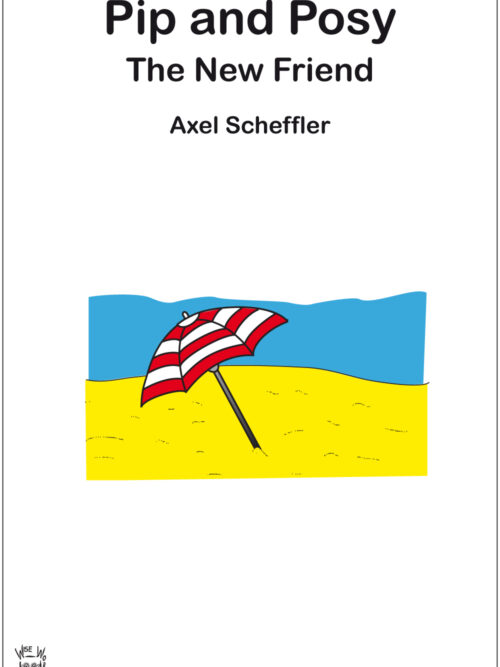 USING BOOKS TO ENHANCE A CHILD’S UNDERSTANDING AND INCREASE HIS/HER EXPRESSIVE LANGUAGE You can use a book to expand a child’s • Vocabulary (sandcastle, seagull, beach, stole, paddled, coin) • Understanding of concepts (sad, bad, little, huge) • Ability to understand questions Wise Words Scripts – offer clinicians, teachers and parents readily available questions designed specifically for each book. A script provides a variety of questions at each level of understanding for each page of the book. A teacher or clinician working with a group of children can tailor questions to each child’s language ability. This script and other available scripts have been based on Marion Blank’s Model of Classroom Language. Marion Blank recognised the importance of keeping questions and statements within a child’s level of understanding. The more concrete the statement or question, the easier it will be for the child to understand. As questions become more abstract, they become harder for children to answer. The Blank Model is divided into 4 levels of questioning, moving from the concrete (easiest) at Level 1 to the abstract (most difficult) at Level 4. All Wise Words Programs are sent as a download unless otherwise specified. To ship a USB, please add either Australian (A$20) or International (A$55) shipping to shopping cart.
USING BOOKS TO ENHANCE A CHILD’S UNDERSTANDING AND INCREASE HIS/HER EXPRESSIVE LANGUAGE You can use a book to expand a child’s • Vocabulary (sandcastle, seagull, beach, stole, paddled, coin) • Understanding of concepts (sad, bad, little, huge) • Ability to understand questions Wise Words Scripts – offer clinicians, teachers and parents readily available questions designed specifically for each book. A script provides a variety of questions at each level of understanding for each page of the book. A teacher or clinician working with a group of children can tailor questions to each child’s language ability. This script and other available scripts have been based on Marion Blank’s Model of Classroom Language. Marion Blank recognised the importance of keeping questions and statements within a child’s level of understanding. The more concrete the statement or question, the easier it will be for the child to understand. As questions become more abstract, they become harder for children to answer. The Blank Model is divided into 4 levels of questioning, moving from the concrete (easiest) at Level 1 to the abstract (most difficult) at Level 4. All Wise Words Programs are sent as a download unless otherwise specified. To ship a USB, please add either Australian (A$20) or International (A$55) shipping to shopping cart. -
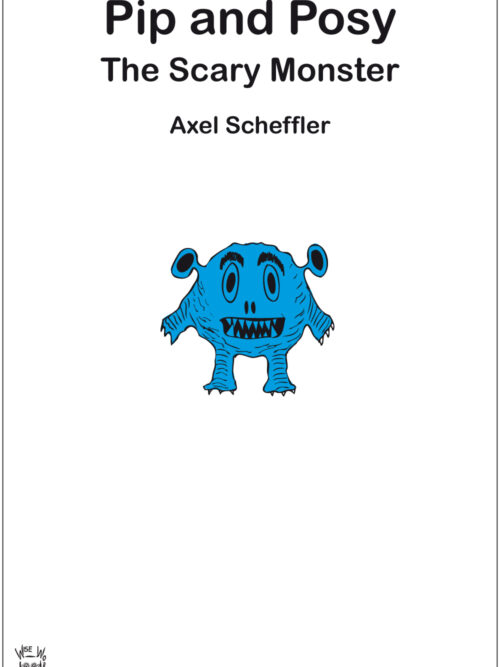 USING BOOKS TO ENHANCE A CHILD’S UNDERSTANDING AND INCREASE HIS/HER EXPRESSIVE LANGUAGE You can use a book to expand a child’s • Vocabulary (costume, monster, apron, knock, crying, waiting) • Understanding of concepts (sorry, bored, scary) • Ability to understand questions Wise Words Scripts – offer clinicians, teachers and parents readily available questions designed specifically for each book. A script provides a variety of questions at each level of understanding for each page of the book. A teacher or clinician working with a group of children can tailor questions to each child’s language ability. This script and other available scripts have been based on Marion Blank’s Model of Classroom Language. Marion Blank recognised the importance of keeping questions and statements within a child’s level of understanding. The more concrete the statement or question, the easier it will be for the child to understand. As questions become more abstract, they become harder for children to answer. The Blank Model is divided into 4 levels of questioning, moving from the concrete (easiest) at Level 1 to the abstract (most difficult) at Level 4. All Wise Words Programs are sent as a download unless otherwise specified. To ship a USB, please add either Australian (A$20) or International (A$55) shipping to shopping cart.
USING BOOKS TO ENHANCE A CHILD’S UNDERSTANDING AND INCREASE HIS/HER EXPRESSIVE LANGUAGE You can use a book to expand a child’s • Vocabulary (costume, monster, apron, knock, crying, waiting) • Understanding of concepts (sorry, bored, scary) • Ability to understand questions Wise Words Scripts – offer clinicians, teachers and parents readily available questions designed specifically for each book. A script provides a variety of questions at each level of understanding for each page of the book. A teacher or clinician working with a group of children can tailor questions to each child’s language ability. This script and other available scripts have been based on Marion Blank’s Model of Classroom Language. Marion Blank recognised the importance of keeping questions and statements within a child’s level of understanding. The more concrete the statement or question, the easier it will be for the child to understand. As questions become more abstract, they become harder for children to answer. The Blank Model is divided into 4 levels of questioning, moving from the concrete (easiest) at Level 1 to the abstract (most difficult) at Level 4. All Wise Words Programs are sent as a download unless otherwise specified. To ship a USB, please add either Australian (A$20) or International (A$55) shipping to shopping cart. -
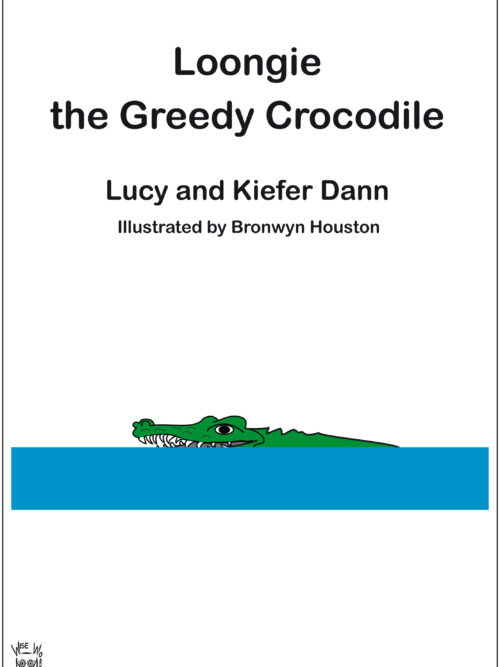 Wise Words indigenous materials have been devised to support parents, teachers and clinicians who may find it challenging to teach indigenous content because of concerns that they may not have the knowledge or understanding to ensure that the books, their stories and the complexity of the information is presented in a respectful and appropriate manner. With thanks to Joedie Lawler who kindly edited these resources. Joedie Lawler is a Biripi woman from Taree who has strong connections to her country and culture. She has advocated in cultural heritage for the past 25 years. Joedie is a teacher of weaving and art who shares her skills and knowledge through her work with the Ngarra Consultancy. The Ngarra Consultancy is an Aboriginal owned and operated business that assists appropriate engagement understanding and experience of Aboriginal culture. The Australian Curriculum has established Aboriginal and Torres Strait Islander histories and cultures as a priority. This will ensure that Aboriginal and Torres Strait Islander students are able to see themselves, their identities and their cultures reflected in the curriculum of each of the learning areas. Exposure to these and other indigenous books can build awareness of and respect for Aboriginal and Torres Strait Islander histories and cultures amongst all Australian children. USING BOOKS TO ENHANCE A CHILD’S UNDERSTANDING AND INCREASE HIS/HER EXPRESSIVE LANGUAGE You can use a book to expand a child’s • Vocabulary (hero, mangrove, creek, grumble, shellfish, search, glide, perch) • Understanding of concepts (e.g. greedy, slimy, strange, safe, hard, broken) • Ability to understand questions Loongie the Greedy Crocodile - Loongie is a greedy saltwater crocodile who lives among the mangroves at Walaman Creek in the remote Kimberley region of Western Australia. He has no friends and no-one will come near the creek while he’s around. Loongie soon learns why being greedy has its consequences. Wise Words Scripts - offer clinicians, teachers and parents readily available questions designed specifically for each book. A script provides a variety of questions at each level of understanding for each page of the book. A teacher or clinician working with a group of children can tailor questions to each child's language ability. This script and other available scripts have been based on Marion Blank's Model of Classroom Language.
Wise Words indigenous materials have been devised to support parents, teachers and clinicians who may find it challenging to teach indigenous content because of concerns that they may not have the knowledge or understanding to ensure that the books, their stories and the complexity of the information is presented in a respectful and appropriate manner. With thanks to Joedie Lawler who kindly edited these resources. Joedie Lawler is a Biripi woman from Taree who has strong connections to her country and culture. She has advocated in cultural heritage for the past 25 years. Joedie is a teacher of weaving and art who shares her skills and knowledge through her work with the Ngarra Consultancy. The Ngarra Consultancy is an Aboriginal owned and operated business that assists appropriate engagement understanding and experience of Aboriginal culture. The Australian Curriculum has established Aboriginal and Torres Strait Islander histories and cultures as a priority. This will ensure that Aboriginal and Torres Strait Islander students are able to see themselves, their identities and their cultures reflected in the curriculum of each of the learning areas. Exposure to these and other indigenous books can build awareness of and respect for Aboriginal and Torres Strait Islander histories and cultures amongst all Australian children. USING BOOKS TO ENHANCE A CHILD’S UNDERSTANDING AND INCREASE HIS/HER EXPRESSIVE LANGUAGE You can use a book to expand a child’s • Vocabulary (hero, mangrove, creek, grumble, shellfish, search, glide, perch) • Understanding of concepts (e.g. greedy, slimy, strange, safe, hard, broken) • Ability to understand questions Loongie the Greedy Crocodile - Loongie is a greedy saltwater crocodile who lives among the mangroves at Walaman Creek in the remote Kimberley region of Western Australia. He has no friends and no-one will come near the creek while he’s around. Loongie soon learns why being greedy has its consequences. Wise Words Scripts - offer clinicians, teachers and parents readily available questions designed specifically for each book. A script provides a variety of questions at each level of understanding for each page of the book. A teacher or clinician working with a group of children can tailor questions to each child's language ability. This script and other available scripts have been based on Marion Blank's Model of Classroom Language. -
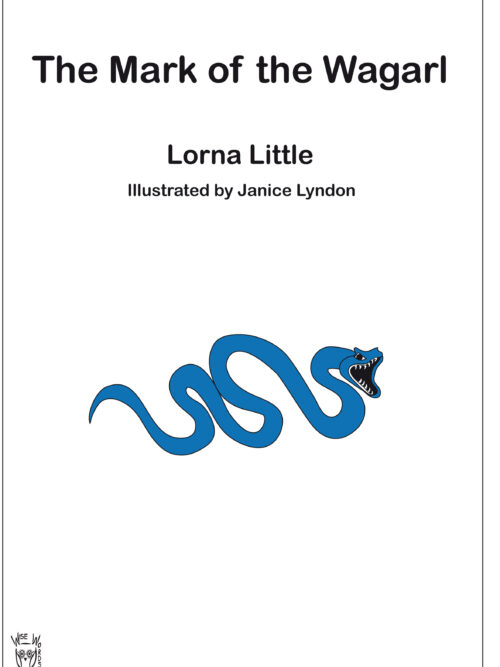 Wise Words indigenous materials have been devised to support parents, teachers and clinicians who may find it challenging to teach indigenous content because of concerns that they may not have the knowledge or understanding to ensure that the books, their stories and the complexity of the information is presented in a respectful and appropriate manner. With thanks to Joedie Lawler who kindly edited these resources. Joedie Lawler is a Biripi woman from Taree who has strong connections to her country and culture. She has advocated in cultural heritage for the past 25 years. Joedie is a teacher of weaving and art who shares her skills and knowledge through her work with the Ngarra Consultancy. The Ngarra Consultancy is an Aboriginal owned and operated business that assists appropriate engagement understanding and experience of Aboriginal culture. The Australian Curriculum has established Aboriginal and Torres Strait Islander histories and cultures as a priority. This will ensure that Aboriginal and Torres Strait Islander students are able to see themselves, their identities and their cultures reflected in the curriculum of each of the learning areas. Exposure to these and other indigenous books can build awareness of and respect for Aboriginal and Torres Strait Islander histories and cultures amongst all Australian children. USING BOOKS TO ENHANCE A CHILD’S UNDERSTANDING AND INCREASE HIS/HER EXPRESSIVE LANGUAGE You can use a book to expand a child’s • Vocabulary (totem, generation, birthmark, kingfish, birdiya, sacred, cave) • Understanding of concepts (e.g. promise, slimy, grateful, silently, clean) • Ability to understand questions The Mark of the Wagarl - Maadjit Wagarl is the sacred water snake and guardian spirit of all the rivers and fresh waters of Australias Nyoongar Country. This is the story of how a little boy questioned the wisdom of his elders and why he received the Wagarl for his totem. Wise Words Scripts - offer clinicians, teachers and parents readily available questions designed specifically for each book. A script provides a variety of questions at each level of understanding for each page of the book. A teacher or clinician working with a group of children can tailor questions to each child's language ability. This script and other available scripts have been based on Marion Blank's Model of Classroom Language.
Wise Words indigenous materials have been devised to support parents, teachers and clinicians who may find it challenging to teach indigenous content because of concerns that they may not have the knowledge or understanding to ensure that the books, their stories and the complexity of the information is presented in a respectful and appropriate manner. With thanks to Joedie Lawler who kindly edited these resources. Joedie Lawler is a Biripi woman from Taree who has strong connections to her country and culture. She has advocated in cultural heritage for the past 25 years. Joedie is a teacher of weaving and art who shares her skills and knowledge through her work with the Ngarra Consultancy. The Ngarra Consultancy is an Aboriginal owned and operated business that assists appropriate engagement understanding and experience of Aboriginal culture. The Australian Curriculum has established Aboriginal and Torres Strait Islander histories and cultures as a priority. This will ensure that Aboriginal and Torres Strait Islander students are able to see themselves, their identities and their cultures reflected in the curriculum of each of the learning areas. Exposure to these and other indigenous books can build awareness of and respect for Aboriginal and Torres Strait Islander histories and cultures amongst all Australian children. USING BOOKS TO ENHANCE A CHILD’S UNDERSTANDING AND INCREASE HIS/HER EXPRESSIVE LANGUAGE You can use a book to expand a child’s • Vocabulary (totem, generation, birthmark, kingfish, birdiya, sacred, cave) • Understanding of concepts (e.g. promise, slimy, grateful, silently, clean) • Ability to understand questions The Mark of the Wagarl - Maadjit Wagarl is the sacred water snake and guardian spirit of all the rivers and fresh waters of Australias Nyoongar Country. This is the story of how a little boy questioned the wisdom of his elders and why he received the Wagarl for his totem. Wise Words Scripts - offer clinicians, teachers and parents readily available questions designed specifically for each book. A script provides a variety of questions at each level of understanding for each page of the book. A teacher or clinician working with a group of children can tailor questions to each child's language ability. This script and other available scripts have been based on Marion Blank's Model of Classroom Language. -
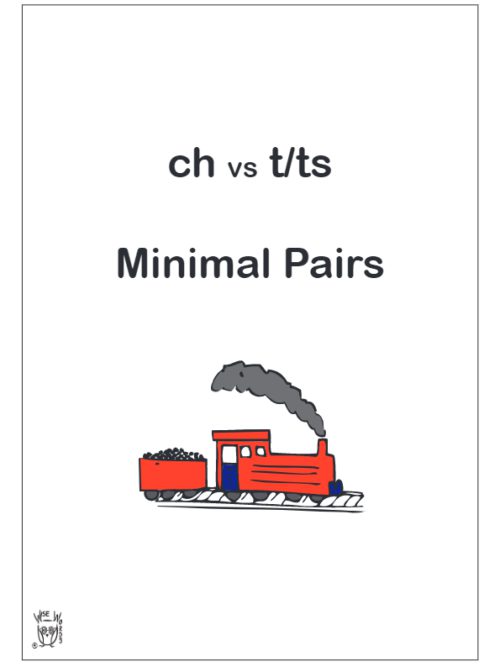 Using Contrastive Pairs Although many children may progress quickly through a regular articulation program, some respond better using a phonological approach. This program uses the contrastive phonological approach of Minimal Pairs. The use of Minimal Pairs is supported by evidence-based practice and has been shown to be an effective and efficient treatment for contrasting vowels or consonants. Once the ‘ch’ sound has been established in single, meaningful words, this program can be used. It will help your child hear and use the sound correctly to affect a change in meaning. Although your child is generally able to identify your ‘ch’ productions, he may use the error sounds ‘t’ or 'ts' for any ‘ch’ words. e.g. He may say ... ‘two’ when he means to say ‘chew’ ‘mats’ when he means to say ‘match’ ‘tin’ when he means to say ‘chin’ As he says the words, he may not recognise that he is using an incorrect sound. These sound errors can affect his intelligibility and will change the meaning in his connected speech.
Using Contrastive Pairs Although many children may progress quickly through a regular articulation program, some respond better using a phonological approach. This program uses the contrastive phonological approach of Minimal Pairs. The use of Minimal Pairs is supported by evidence-based practice and has been shown to be an effective and efficient treatment for contrasting vowels or consonants. Once the ‘ch’ sound has been established in single, meaningful words, this program can be used. It will help your child hear and use the sound correctly to affect a change in meaning. Although your child is generally able to identify your ‘ch’ productions, he may use the error sounds ‘t’ or 'ts' for any ‘ch’ words. e.g. He may say ... ‘two’ when he means to say ‘chew’ ‘mats’ when he means to say ‘match’ ‘tin’ when he means to say ‘chin’ As he says the words, he may not recognise that he is using an incorrect sound. These sound errors can affect his intelligibility and will change the meaning in his connected speech. -
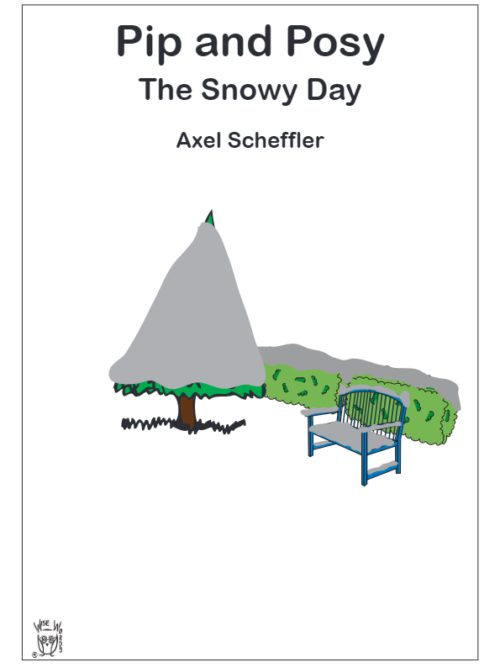 USING BOOKS TO ENHANCE A CHILD'S UNDERSTANDING AND INCREASE HIS/HER EXPRESSIVE LANGUAGE You can use a book to expand a child's • vocabulary (snow, waterproof, mittens, snowflakes, sorry, footprints) • understanding of concepts (e.g. warm, comfy, cold, kind) • ability to understand questions Wise Words Scripts - offer clinicians, teachers and parents readily available questions designed specifically for each book. A script provides a variety of questions at each level of understanding for each page of the book. A teacher or clinician working with a group of children can tailor questions to each child's language ability. This script and other available scripts have been based on Marion Blank's Model of Classroom Language. Marion Blank recognised the importance of keeping questions and statements within a child’s level of understanding. The more concrete the statement or question, the easier it will be for the child to understand. As questions become more abstract, they become harder for children to answer. The Blank Model is divided into 4 levels of questioning, moving from the concrete (easiest) at Level 1 to the abstract (most difficult) at Level 4.
USING BOOKS TO ENHANCE A CHILD'S UNDERSTANDING AND INCREASE HIS/HER EXPRESSIVE LANGUAGE You can use a book to expand a child's • vocabulary (snow, waterproof, mittens, snowflakes, sorry, footprints) • understanding of concepts (e.g. warm, comfy, cold, kind) • ability to understand questions Wise Words Scripts - offer clinicians, teachers and parents readily available questions designed specifically for each book. A script provides a variety of questions at each level of understanding for each page of the book. A teacher or clinician working with a group of children can tailor questions to each child's language ability. This script and other available scripts have been based on Marion Blank's Model of Classroom Language. Marion Blank recognised the importance of keeping questions and statements within a child’s level of understanding. The more concrete the statement or question, the easier it will be for the child to understand. As questions become more abstract, they become harder for children to answer. The Blank Model is divided into 4 levels of questioning, moving from the concrete (easiest) at Level 1 to the abstract (most difficult) at Level 4. -
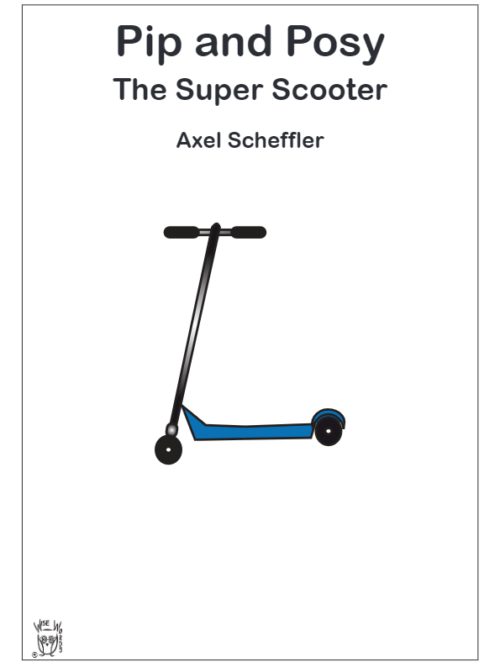 USING BOOKS TO ENHANCE A CHILD'S UNDERSTANDING AND INCREASE HIS/HER EXPRESSIVE LANGUAGE You can use a book to expand a child's • vocabulary (appeared, snatched, sore, tricks) • understanding of concepts (e.g. fast, easy, careful, soft) • ability to understand questions Wise Words Scripts - offer clinicians, teachers and parents readily available questions designed specifically for each book. A script provides a variety of questions at each level of understanding for each page of the book. A teacher or clinician working with a group of children can tailor questions to each child's language ability. This script and other available scripts have been based on Marion Blank's Model of Classroom Language. Marion Blank recognised the importance of keeping questions and statements within a child’s level of understanding. The more concrete the statement or question, the easier it will be for the child to understand. As questions become more abstract, they become harder for children to answer. The Blank Model is divided into 4 levels of questioning, moving from the concrete (easiest) at Level 1 to the abstract (most difficult) at Level 4.
USING BOOKS TO ENHANCE A CHILD'S UNDERSTANDING AND INCREASE HIS/HER EXPRESSIVE LANGUAGE You can use a book to expand a child's • vocabulary (appeared, snatched, sore, tricks) • understanding of concepts (e.g. fast, easy, careful, soft) • ability to understand questions Wise Words Scripts - offer clinicians, teachers and parents readily available questions designed specifically for each book. A script provides a variety of questions at each level of understanding for each page of the book. A teacher or clinician working with a group of children can tailor questions to each child's language ability. This script and other available scripts have been based on Marion Blank's Model of Classroom Language. Marion Blank recognised the importance of keeping questions and statements within a child’s level of understanding. The more concrete the statement or question, the easier it will be for the child to understand. As questions become more abstract, they become harder for children to answer. The Blank Model is divided into 4 levels of questioning, moving from the concrete (easiest) at Level 1 to the abstract (most difficult) at Level 4. -
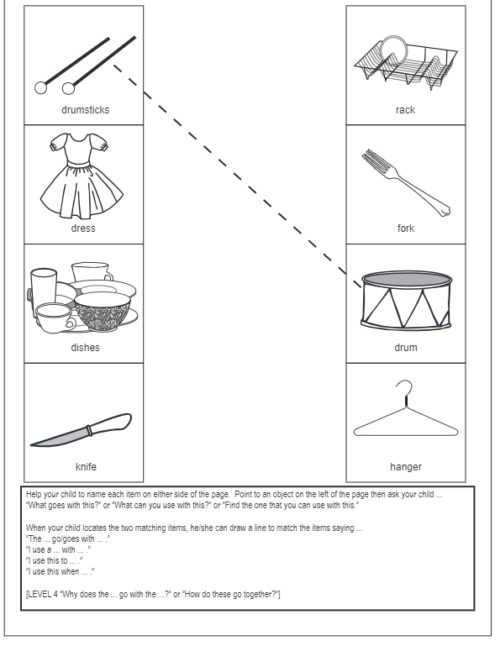
Level 3 (& Level 4)
Identifying Objects Used With Each Other Level 3 “Find the one to use with this.” “What can you use this with?” “What goes with this?” “Which objects are used together?” “Find the one that can be used with ... .” Justifying a Prediction Level 4 “Why would you use a ... to ... ?” “Why does a ... go with ... ?” “How does a ... go with ... ?” “Why should we use a ... to ... ?” Why doesn’t a ... go with ... ? This task requires a child to identify objects which can be used together. The task can be extended to Level 4 where the child is required to explain why objects are used together and why certain objects are not used together. -
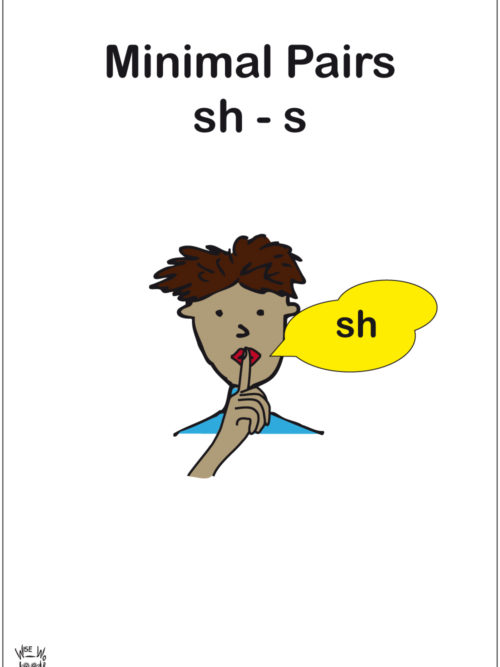 All Wise Words Programs are sent as a download unless otherwise specified. To ship a USB, please add either Australian (A$20) or International (A$55) shipping to shopping cart. Using Contrastive Pairs Although many children may progress quickly through a regular articulation program, some respond better using a phonological approach. This program uses the contrastive phonological approach of Minimal Pairs. The use of Minimal Pairs is supported by evidence-based practice and has been shown to be an effective and efficient treatment for contrasting vowels or consonants. Once the ‘sh’ sound has been established in single, meaningful words, this program can be used. Working through this program will help your child hear and use the sound correctly to affect a change in meaning. Although your child is generally able to identify your ‘sh’ vs ‘s’ productions, he may use the error sound ‘s’ for any ‘sh’ words. e.g. He may say … ‘Sue’ when he means to say ‘shoe’ ‘wassing’ when he means to say ‘washing’ ‘fiss’ when he means to say ‘fish’ As he says the words, he may not recognise that he is using an incorrect sound. These sound errors can affect his intelligibility and will change the meaning in his connected speech.
All Wise Words Programs are sent as a download unless otherwise specified. To ship a USB, please add either Australian (A$20) or International (A$55) shipping to shopping cart. Using Contrastive Pairs Although many children may progress quickly through a regular articulation program, some respond better using a phonological approach. This program uses the contrastive phonological approach of Minimal Pairs. The use of Minimal Pairs is supported by evidence-based practice and has been shown to be an effective and efficient treatment for contrasting vowels or consonants. Once the ‘sh’ sound has been established in single, meaningful words, this program can be used. Working through this program will help your child hear and use the sound correctly to affect a change in meaning. Although your child is generally able to identify your ‘sh’ vs ‘s’ productions, he may use the error sound ‘s’ for any ‘sh’ words. e.g. He may say … ‘Sue’ when he means to say ‘shoe’ ‘wassing’ when he means to say ‘washing’ ‘fiss’ when he means to say ‘fish’ As he says the words, he may not recognise that he is using an incorrect sound. These sound errors can affect his intelligibility and will change the meaning in his connected speech. -
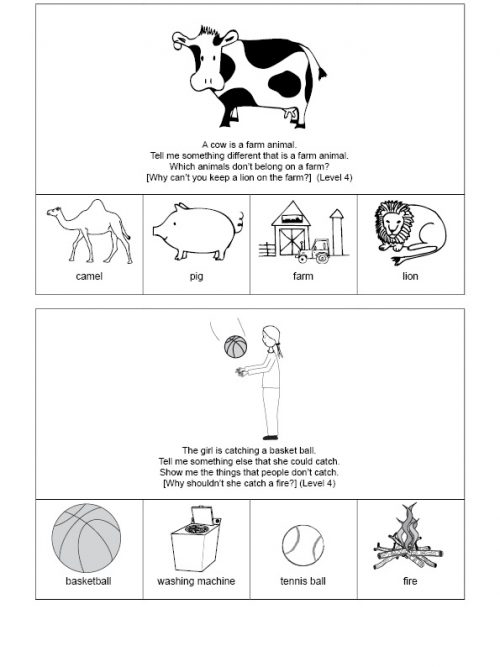
Level 3 (& Level 4)
Selecting an Object or Set of Objects by Exclusion Level 3 “Tell me something else that ...” “Tell me something different that ..." "Show me the things that aren’t ...” “Point to the things that don’t ...” “Find the things that the boy can’t ...” Reasoning & Problem Solving Level 4 “Why is a ... made of ...?" "What should he do if ...?" "Why wouldn't ...?" "What could you use to ...?" "What could you ... if ...?" This program targets Level 3 questions and statements. At this level of understanding, your child will need to look beyond the material in front of him. He will be required to evaluate and reorder the information. A typical skill in this category is the ability to exclude material. Your child will need to follow directions which may use the words ‘not, don’t, can’t, something else, other than’. The activities in this program have been designed specifically to help your child recognise alternatives. A number of Level 4 questions have been included in this program. These tasks will prove useful for those children who are working towards a more abstract type of question. Questions at this level include Why should ...? Why shouldn’t ...? Why can ...? Why can’t ...? What could ...? How can we tell ...? At this level of understanding, your child will need to look beyond the material in front of him/her and will then be required to evaluate and reorder the information. A typical skill in this category is the ability to exclude material. Your child will need to follow directions which may include the words ‘not, don’t, can’t, something else, other than’. The activities in this program have been designed specifically to help your child recognise alternatives. Example of a Level 3 Activity 1. “A cow is a farm animal. “Tell me something different that is a farm animal.” Your child is given the following possible answers: A camel - An animal but not a farm animal. A pig - The correct answer. This is an alternative farm animal. A farm - The place where farm animals are found. A lion - An animal but not a farm animal. 2. “Which animals don’t belong on the farm?” - “Camel, lion” Example of a Level 4 Activity 1.“Mum fills the kettle with water. How can we tell that the kettle is boiling?" 2. “Frogs can jump. Why can’t snails jump? -
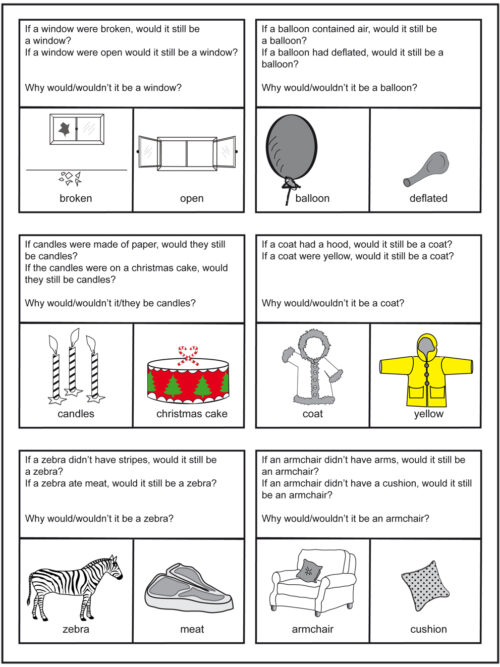
Level 4
Justifying a Decision Based on Characteristics
This program is underpinned by Marion Blank’s Model of Classroom Language. The activities presented in this program involve more complex verbal ideas and are based on Blank’s model. For your child to be able to succeed with these tasks, he will need to extend beyond what can be immediately seen or perceived. He will need to reason and make decisions based on the attributes of objects, considering possibilities which may not be immediately obvious, reflecting on previous experiences and information. He will be required to use this information to reason and respond.
-
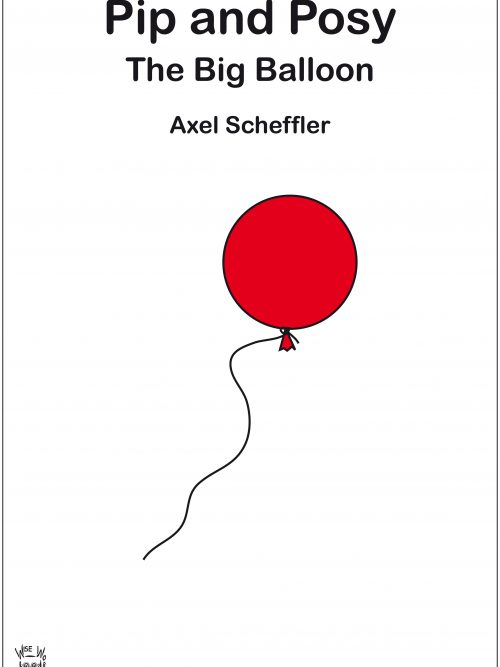 USING BOOKS TO ENHANCE A CHILD'S UNDERSTANDING AND INCREASE HIS/HER EXPRESSIVE LANGUAGE You can use a book to expand a child's • Vocabulary (stool, kennel, basket, sty, reaching, searching) • Understanding of concepts (e.g. big - little, wet - dry, nearly, scary, funny) • Ability to understand questions Wise Words Scripts - offer clinicians, teachers and parents readily available questions designed specifically for each book. A script provides a variety of questions at each level of understanding for each page of the book. A teacher or clinician working with a group of children can tailor questions to each child's language ability. This script and other available scripts have been based on Marion Blank's Model of Classroom Language. Marion Blank recognised the importance of keeping questions and statements within a child’s level of understanding. The more concrete the statement or question, the easier it will be for the child to understand. As questions become more abstract, they become harder for children to answer. The Blank Model is divided into 4 levels of questioning, moving from the concrete (easiest) at Level 1 to the abstract (most difficult) at Level 4.
USING BOOKS TO ENHANCE A CHILD'S UNDERSTANDING AND INCREASE HIS/HER EXPRESSIVE LANGUAGE You can use a book to expand a child's • Vocabulary (stool, kennel, basket, sty, reaching, searching) • Understanding of concepts (e.g. big - little, wet - dry, nearly, scary, funny) • Ability to understand questions Wise Words Scripts - offer clinicians, teachers and parents readily available questions designed specifically for each book. A script provides a variety of questions at each level of understanding for each page of the book. A teacher or clinician working with a group of children can tailor questions to each child's language ability. This script and other available scripts have been based on Marion Blank's Model of Classroom Language. Marion Blank recognised the importance of keeping questions and statements within a child’s level of understanding. The more concrete the statement or question, the easier it will be for the child to understand. As questions become more abstract, they become harder for children to answer. The Blank Model is divided into 4 levels of questioning, moving from the concrete (easiest) at Level 1 to the abstract (most difficult) at Level 4. -
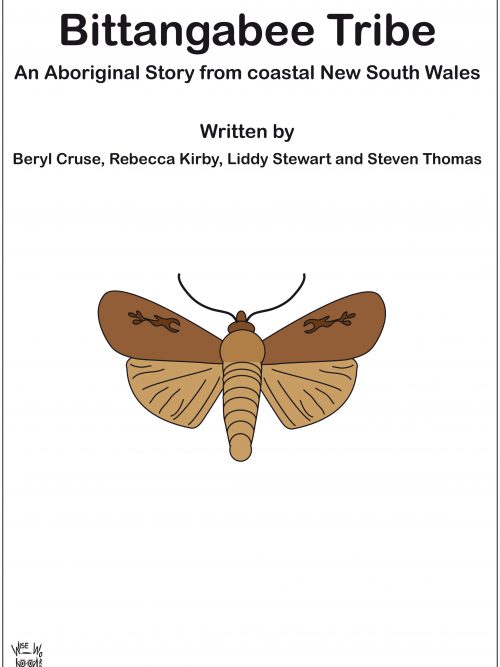 Wise Words indigenous materials have been devised to support parents, teachers and clinicians who may find it challenging to teach indigenous content because of concerns that they may not have the knowledge or understanding to ensure that the books, their stories and the complexity of the information is presented in a respectful and appropriate manner. With thanks to Tara Lewis who kindly edited these resources. Tara Lewis is a Speech Pathologist and member of Speech Pathology Australia's Aboriginal and Torres Strait Islander Advisory Committee. Tara is an Iman woman from the Taroom country of Western Queensland. The Australian Curriculum has established Aboriginal and Torres Strait Islander histories and cultures as a priority. This will ensure that Aboriginal and Torres Strait Islander students are able to see themselves, their identities and their cultures reflected in the curriculum of each of the learning areas. Exposure to these and other indigenous books can build awareness of and respect for Aboriginal and Torres Strait Islander histories and cultures amongst all Australian children. USING BOOKS TO ENHANCE A CHILD'S UNDERSTANDING AND INCREASE HIS/HER EXPRESSIVE LANGUAGE You can use a book to expand a child's • Vocabulary (warrior, coast, oysters, tribes, corroborees, trade, hovering) • Understanding of concepts (e.g. often, wise, great, fresh) • Ability to understand questions Bittangabee Tribe is based around important aspects of traditional Aboriginal life. The book describes the lives of an aboriginal family on the south coast of NSW. The story follows the family on their annual journey into the mountains to meet with other groups and their return to their home near the sea. Wise Words Scripts - offer clinicians, teachers and parents readily available questions designed specifically for each book. A script provides a variety of questions at each level of understanding for each page of the book. A teacher or clinician working with a group of children can tailor questions to each child's language ability. This script and other available scripts have been based on Marion Blank's Model of Classroom Language.
Wise Words indigenous materials have been devised to support parents, teachers and clinicians who may find it challenging to teach indigenous content because of concerns that they may not have the knowledge or understanding to ensure that the books, their stories and the complexity of the information is presented in a respectful and appropriate manner. With thanks to Tara Lewis who kindly edited these resources. Tara Lewis is a Speech Pathologist and member of Speech Pathology Australia's Aboriginal and Torres Strait Islander Advisory Committee. Tara is an Iman woman from the Taroom country of Western Queensland. The Australian Curriculum has established Aboriginal and Torres Strait Islander histories and cultures as a priority. This will ensure that Aboriginal and Torres Strait Islander students are able to see themselves, their identities and their cultures reflected in the curriculum of each of the learning areas. Exposure to these and other indigenous books can build awareness of and respect for Aboriginal and Torres Strait Islander histories and cultures amongst all Australian children. USING BOOKS TO ENHANCE A CHILD'S UNDERSTANDING AND INCREASE HIS/HER EXPRESSIVE LANGUAGE You can use a book to expand a child's • Vocabulary (warrior, coast, oysters, tribes, corroborees, trade, hovering) • Understanding of concepts (e.g. often, wise, great, fresh) • Ability to understand questions Bittangabee Tribe is based around important aspects of traditional Aboriginal life. The book describes the lives of an aboriginal family on the south coast of NSW. The story follows the family on their annual journey into the mountains to meet with other groups and their return to their home near the sea. Wise Words Scripts - offer clinicians, teachers and parents readily available questions designed specifically for each book. A script provides a variety of questions at each level of understanding for each page of the book. A teacher or clinician working with a group of children can tailor questions to each child's language ability. This script and other available scripts have been based on Marion Blank's Model of Classroom Language. -
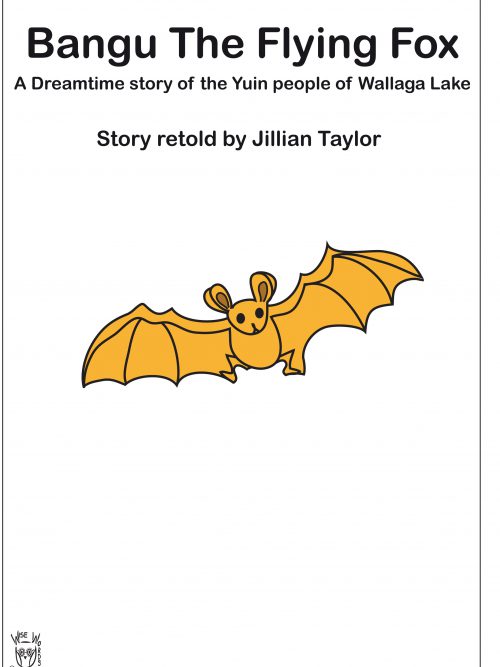 Wise Words indigenous materials have been devised to support parents, teachers and clinicians who may find it challenging to teach indigenous content because of concerns that they may not have the knowledge or understanding to ensure that the books, their stories and the complexity of the information is presented in a respectful and appropriate manner. With thanks to Tara Lewis who kindly edited these resources. Tara Lewis is a Speech Pathologist and member of Speech Pathology Australia's Aboriginal and Torres Strait Islander Advisory Committee. Tara is an Iman woman from the Taroom country of Western Queensland. The Australian Curriculum has established Aboriginal and Torres Strait Islander histories and cultures as a priority. This will ensure that Aboriginal and Torres Strait Islander students are able to see themselves, their identities and their cultures reflected in the curriculum of each of the learning areas. Exposure to these and other indigenous books can build awareness of and respect for Aboriginal and Torres Strait Islander histories and cultures amongst all Australian children. USING BOOKS TO ENHANCE A CHILD'S UNDERSTANDING AND INCREASE HIS/HER EXPRESSIVE LANGUAGE You can use a book to expand a child's • Vocabulary (world, fighting, winning, pretending, crept) • Understanding of concepts (e.g. new, many, frightened, around, lonely) • Ability to understand questions Bangu The Flying Fox details a traditional Dreaming story from the Yuin people of Wallaga Lake. Bangu explores the importance of belonging and identification. Wise Words Scripts - offer clinicians, teachers and parents readily available questions designed specifically for each book. A script provides a variety of questions at each level of understanding for each page of the book. A teacher or clinician working with a group of children can tailor questions to each child's language ability. This script and other available scripts have been based on Marion Blank's Model of Classroom Language.
Wise Words indigenous materials have been devised to support parents, teachers and clinicians who may find it challenging to teach indigenous content because of concerns that they may not have the knowledge or understanding to ensure that the books, their stories and the complexity of the information is presented in a respectful and appropriate manner. With thanks to Tara Lewis who kindly edited these resources. Tara Lewis is a Speech Pathologist and member of Speech Pathology Australia's Aboriginal and Torres Strait Islander Advisory Committee. Tara is an Iman woman from the Taroom country of Western Queensland. The Australian Curriculum has established Aboriginal and Torres Strait Islander histories and cultures as a priority. This will ensure that Aboriginal and Torres Strait Islander students are able to see themselves, their identities and their cultures reflected in the curriculum of each of the learning areas. Exposure to these and other indigenous books can build awareness of and respect for Aboriginal and Torres Strait Islander histories and cultures amongst all Australian children. USING BOOKS TO ENHANCE A CHILD'S UNDERSTANDING AND INCREASE HIS/HER EXPRESSIVE LANGUAGE You can use a book to expand a child's • Vocabulary (world, fighting, winning, pretending, crept) • Understanding of concepts (e.g. new, many, frightened, around, lonely) • Ability to understand questions Bangu The Flying Fox details a traditional Dreaming story from the Yuin people of Wallaga Lake. Bangu explores the importance of belonging and identification. Wise Words Scripts - offer clinicians, teachers and parents readily available questions designed specifically for each book. A script provides a variety of questions at each level of understanding for each page of the book. A teacher or clinician working with a group of children can tailor questions to each child's language ability. This script and other available scripts have been based on Marion Blank's Model of Classroom Language. -
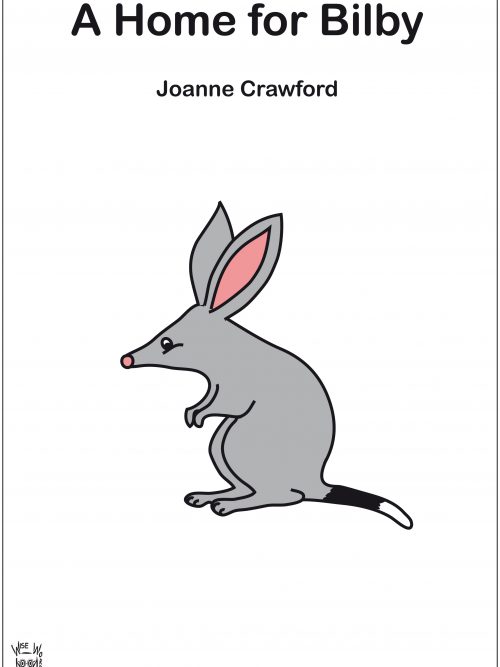 Wise Words indigenous materials have been devised to support parents, teachers and clinicians who may find it challenging to teach indigenous content because of concerns that they may not have the knowledge or understanding to ensure that the books, their stories and the complexity of the information is presented in a respectful and appropriate manner. With thanks to Tara Lewis who kindly edited these resources. Tara Lewis is a Speech Pathologist and member of Speech Pathology Australia's Aboriginal and Torres Strait Islander Advisory Committee. Tara is an Iman woman from the Taroom country of Western Queensland. The Australian Curriculum has established Aboriginal and Torres Strait Islander histories and cultures as a priority. This will ensure that Aboriginal and Torres Strait Islander students are able to see themselves, their identities and their cultures reflected in the curriculum of each of the learning areas. Exposure to these and other indigenous books can build awareness of and respect for Aboriginal and Torres Strait Islander histories and cultures amongst all Australian children. USING BOOKS TO ENHANCE A CHILD'S UNDERSTANDING AND INCREASE HIS/HER EXPRESSIVE LANGUAGE You can use a book to expand a child's • Vocabulary (gum tree, eucalyptus, ambled, burrow, stream) • Understanding of concepts (e.g. busy, quietly, frightened, impatiently, huffy) • Ability to understand questions A Home for Bilby describes the Australian bush and the habitats of the animals that live there. As the animals describe their daily lives and habitats, they develop sympathy for Bilby and help him find a home which is just right for him. Wise Words Scripts - offer clinicians, teachers and parents readily available questions designed specifically for each book. A script provides a variety of questions at each level of understanding for each page of the book. A teacher or clinician working with a group of children can tailor questions to each child's language ability. This script and other available scripts have been based on Marion Blank's Model of Classroom Language.
Wise Words indigenous materials have been devised to support parents, teachers and clinicians who may find it challenging to teach indigenous content because of concerns that they may not have the knowledge or understanding to ensure that the books, their stories and the complexity of the information is presented in a respectful and appropriate manner. With thanks to Tara Lewis who kindly edited these resources. Tara Lewis is a Speech Pathologist and member of Speech Pathology Australia's Aboriginal and Torres Strait Islander Advisory Committee. Tara is an Iman woman from the Taroom country of Western Queensland. The Australian Curriculum has established Aboriginal and Torres Strait Islander histories and cultures as a priority. This will ensure that Aboriginal and Torres Strait Islander students are able to see themselves, their identities and their cultures reflected in the curriculum of each of the learning areas. Exposure to these and other indigenous books can build awareness of and respect for Aboriginal and Torres Strait Islander histories and cultures amongst all Australian children. USING BOOKS TO ENHANCE A CHILD'S UNDERSTANDING AND INCREASE HIS/HER EXPRESSIVE LANGUAGE You can use a book to expand a child's • Vocabulary (gum tree, eucalyptus, ambled, burrow, stream) • Understanding of concepts (e.g. busy, quietly, frightened, impatiently, huffy) • Ability to understand questions A Home for Bilby describes the Australian bush and the habitats of the animals that live there. As the animals describe their daily lives and habitats, they develop sympathy for Bilby and help him find a home which is just right for him. Wise Words Scripts - offer clinicians, teachers and parents readily available questions designed specifically for each book. A script provides a variety of questions at each level of understanding for each page of the book. A teacher or clinician working with a group of children can tailor questions to each child's language ability. This script and other available scripts have been based on Marion Blank's Model of Classroom Language. -
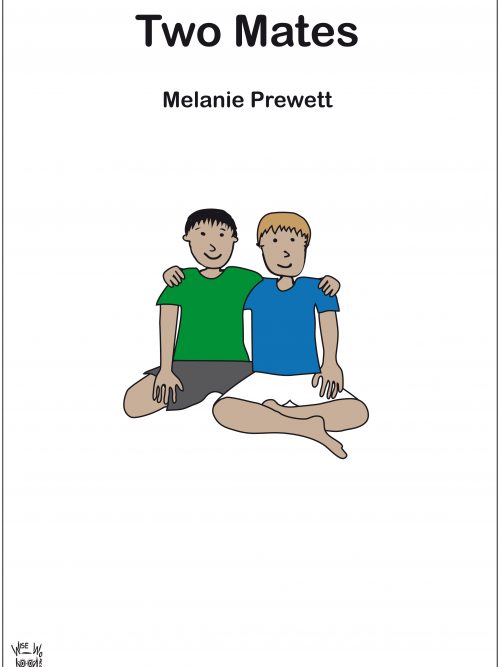 Wise Words indigenous materials have been devised to support parents, teachers and clinicians who may find it challenging to teach indigenous content because of concerns that they may not have the knowledge or understanding to ensure that the books, their stories and the complexity of the information is presented in a respectful and appropriate manner. With thanks to Tara Lewis who kindly edited these resources. Tara Lewis is a Speech Pathologist and member of Speech Pathology Australia's Aboriginal and Torres Strait Islander Advisory Committee. Tara is an Iman woman from the Taroom country of Western Queensland. The Australian Curriculum has established Aboriginal and Torres Strait Islander histories and cultures as a priority. This will ensure that Aboriginal and Torres Strait Islander students are able to see themselves, their identities and their cultures reflected in the curriculum of each of the learning areas. Exposure to these and other indigenous books can build awareness of and respect for Aboriginal and Torres Strait Islander histories and cultures amongst all Australian children. USING BOOKS TO ENHANCE A CHILD'S UNDERSTANDING AND INCREASE HIS/HER EXPRESSIVE LANGUAGE You can use a book to expand a child's • Vocabulary (galaxy, mudskippers, feathers, tide, goanna) • Understanding of concepts (e.g. lucky, fresh, silly, first) • Ability to understand questions Two Mates is the true story of the special friendship between two young boys who have grown up together in the coastal town of Broome in Australia's north-west. The book describes their lives and how each boy recognises the special talents of each other. Jack is Aboriginal and Raf is a non-Aboriginal boy who has spina bifida. Wise Words Scripts - offer clinicians, teachers and parents readily available questions designed specifically for each book. A script provides a variety of questions at each level of understanding for each page of the book. A teacher or clinician working with a group of children can tailor questions to each child's language ability. This script and other available scripts have been based on Marion Blank's Model of Classroom Language.
Wise Words indigenous materials have been devised to support parents, teachers and clinicians who may find it challenging to teach indigenous content because of concerns that they may not have the knowledge or understanding to ensure that the books, their stories and the complexity of the information is presented in a respectful and appropriate manner. With thanks to Tara Lewis who kindly edited these resources. Tara Lewis is a Speech Pathologist and member of Speech Pathology Australia's Aboriginal and Torres Strait Islander Advisory Committee. Tara is an Iman woman from the Taroom country of Western Queensland. The Australian Curriculum has established Aboriginal and Torres Strait Islander histories and cultures as a priority. This will ensure that Aboriginal and Torres Strait Islander students are able to see themselves, their identities and their cultures reflected in the curriculum of each of the learning areas. Exposure to these and other indigenous books can build awareness of and respect for Aboriginal and Torres Strait Islander histories and cultures amongst all Australian children. USING BOOKS TO ENHANCE A CHILD'S UNDERSTANDING AND INCREASE HIS/HER EXPRESSIVE LANGUAGE You can use a book to expand a child's • Vocabulary (galaxy, mudskippers, feathers, tide, goanna) • Understanding of concepts (e.g. lucky, fresh, silly, first) • Ability to understand questions Two Mates is the true story of the special friendship between two young boys who have grown up together in the coastal town of Broome in Australia's north-west. The book describes their lives and how each boy recognises the special talents of each other. Jack is Aboriginal and Raf is a non-Aboriginal boy who has spina bifida. Wise Words Scripts - offer clinicians, teachers and parents readily available questions designed specifically for each book. A script provides a variety of questions at each level of understanding for each page of the book. A teacher or clinician working with a group of children can tailor questions to each child's language ability. This script and other available scripts have been based on Marion Blank's Model of Classroom Language. -
Sale!
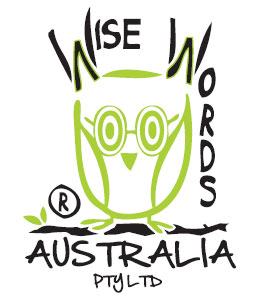 10% Discount Applied to Total Package (See individual programs for details and examples.) The Total Articulation Package includes 13 Articulation Programs. This consists of 6 consonant and 4 vowel programs. Consonant - 'L' Consonant - 'th' voiceless Consonant - 'th' voiced Consonant - 'r' Consonant - 's' Consonant - Minimal Pairs - 'k' vs 't' Consonant - Minimal Pairs - 'sh' vs 's' Consonant - Minimal Pairs - 'ch' vs 't' Vowel - 'ir' Vowel - 'air' Vowel - 'eh' Vowel - Minimal Pairs - 'ir' vs 'or' Wise Words Articulation Programs support clinicians, teachers and parents to establish 'new' (correct) sounds into their child's speech. Each program supplies detailed instructions for every task and game. The instructions have been written in a clear manner for a non-professional to follow. Numerous games are provided. These games have been designed to be fun and interactive and will ensure that the child remains engaged and compliant. Playing the games will help the child to generalise the ‘new’ sound into their everyday speech.
10% Discount Applied to Total Package (See individual programs for details and examples.) The Total Articulation Package includes 13 Articulation Programs. This consists of 6 consonant and 4 vowel programs. Consonant - 'L' Consonant - 'th' voiceless Consonant - 'th' voiced Consonant - 'r' Consonant - 's' Consonant - Minimal Pairs - 'k' vs 't' Consonant - Minimal Pairs - 'sh' vs 's' Consonant - Minimal Pairs - 'ch' vs 't' Vowel - 'ir' Vowel - 'air' Vowel - 'eh' Vowel - Minimal Pairs - 'ir' vs 'or' Wise Words Articulation Programs support clinicians, teachers and parents to establish 'new' (correct) sounds into their child's speech. Each program supplies detailed instructions for every task and game. The instructions have been written in a clear manner for a non-professional to follow. Numerous games are provided. These games have been designed to be fun and interactive and will ensure that the child remains engaged and compliant. Playing the games will help the child to generalise the ‘new’ sound into their everyday speech. -
Sale!
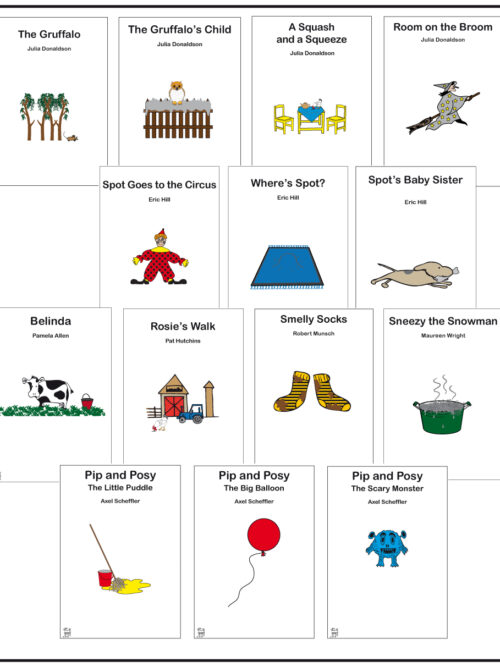 10% Discount Applied to Total Scripts Package (See individual programs for details and examples.) The Total Scripts Package includes 31 scripts: Sneezy the Snowman Rosie's Walk Smelly Socks Belinda The Gruffalo The Gruffalo's Child Stick Man The Smartest Giant in Town Room on the Broom A Squash and a Squeeze Pip & Posy - The Little Puddle Pip & Posy - The Friendly Snail Pip & Posy - The New Friend Pip & Posy - The Christmas Tree Pip & Posy - The Scary Monster Pip & Posy - The Bedtime Frog Pip & Posy - The Big Balloon Pip & Posy - The Snowy Day Pip & Posy - The Super Scooter Where's Spot? Spot Goes to the Park Spot Bakes a Cake Spot Goes to the Circus Spot Goes to School Spot Goes to a Party Spot Goes to the Farm Spot's Birthday Party Spot Visits his Grandparents Spot's Baby Sister Spot Stay's Overnight Spot Goes on Holiday Spot's First Easter USING BOOKS TO HELP YOUR CHILD UNDERSTAND QUESTIONS You can use books to expand your child's • Vocabulary (branch, shivered, paddock, melt, disguise, wind, poisonous, squelchy) • Understanding of concepts (warm, favourite, enormous, kind ) • Ability to understand questions Wise Words Scripts - offer clinicians, teachers and parents readily available questions designed specifically for each book. These scripts have been based on Marion Blank's Model of Classroom Language. Marion Blank recognised the importance of keeping questions and statements within a child’s level of understanding. The more concrete the statement or question, the easier it will be for the child to understand. As questions become more abstract, they become harder for children to answer. The Blank Model is divided into 4 levels of questioning, moving from the concrete (easiest) at Level 1 to the abstract (most difficult) at Level 4.
10% Discount Applied to Total Scripts Package (See individual programs for details and examples.) The Total Scripts Package includes 31 scripts: Sneezy the Snowman Rosie's Walk Smelly Socks Belinda The Gruffalo The Gruffalo's Child Stick Man The Smartest Giant in Town Room on the Broom A Squash and a Squeeze Pip & Posy - The Little Puddle Pip & Posy - The Friendly Snail Pip & Posy - The New Friend Pip & Posy - The Christmas Tree Pip & Posy - The Scary Monster Pip & Posy - The Bedtime Frog Pip & Posy - The Big Balloon Pip & Posy - The Snowy Day Pip & Posy - The Super Scooter Where's Spot? Spot Goes to the Park Spot Bakes a Cake Spot Goes to the Circus Spot Goes to School Spot Goes to a Party Spot Goes to the Farm Spot's Birthday Party Spot Visits his Grandparents Spot's Baby Sister Spot Stay's Overnight Spot Goes on Holiday Spot's First Easter USING BOOKS TO HELP YOUR CHILD UNDERSTAND QUESTIONS You can use books to expand your child's • Vocabulary (branch, shivered, paddock, melt, disguise, wind, poisonous, squelchy) • Understanding of concepts (warm, favourite, enormous, kind ) • Ability to understand questions Wise Words Scripts - offer clinicians, teachers and parents readily available questions designed specifically for each book. These scripts have been based on Marion Blank's Model of Classroom Language. Marion Blank recognised the importance of keeping questions and statements within a child’s level of understanding. The more concrete the statement or question, the easier it will be for the child to understand. As questions become more abstract, they become harder for children to answer. The Blank Model is divided into 4 levels of questioning, moving from the concrete (easiest) at Level 1 to the abstract (most difficult) at Level 4. -
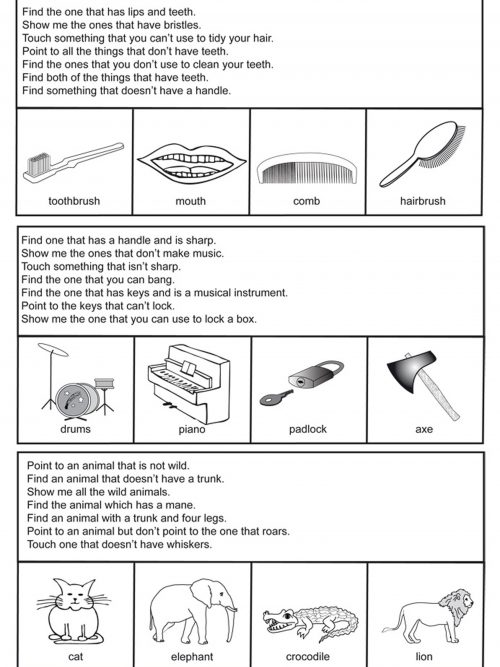
Level 3
Selecting an Object by Exclusion “Find something that is not …” “Tell me something that can’t ....” “Show me something that won’t ...” Citing an Example by Excluding a Class of Objects “Tell me something that grows but isn’t a plant.” “Show me something that belongs in the zoo but isn’t a tiger. “Find a food that is not a vegetable.” Citing an Example by Excluding a Specific Object “Name something that can jump but is not a horse.” “Find something that has leaves but isn’t a tree.” “Show me something that shines but isn’t a torch.” Selecting a Set of Objects by Exclusion “Show me the things that aren’t ...” “Point to the ones that don’t have wheels ...” “Find the food that isn’t ...” The worksheets in this program have been designed to help your child understand negative statements and the concept of exclusion. By working through this program, you will help your child understand that the presence of a negative in a statement generally means that the opposite is true (e.g. “The sky isn’t blue.”). Each page has three components. If your child becomes distracted easily, you should cover two thirds of the page to maintain his focus on the targeted item. Statements and instructions which target exclusion will require your child to overcome the urge to respond to a key word or salient perceptual material. Commonly used negatives are: “not, can’t, don’t, won’t, isn’t, hasn’t, doesn’t”. An additional benefit from working through these activities, is the chance to increase your child’s vocabulary. To achieve this, it is important for you to encourage your child to describe or name each picture. If your child does recognise a picture but does not know a word, you should point to the picture and say the word for him whilst encouraging him to copy what you say. -
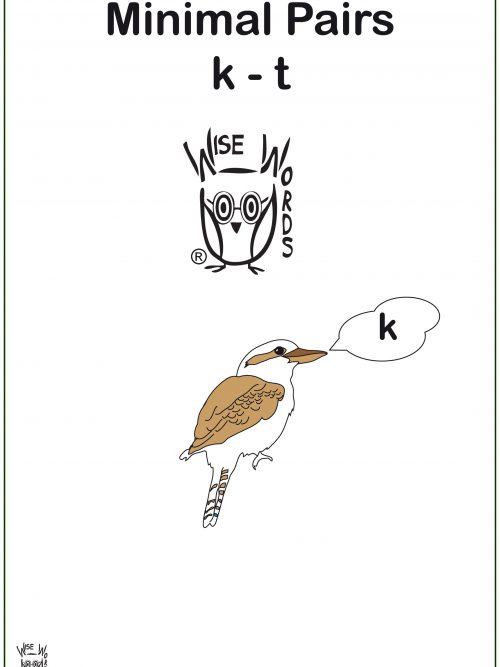 Using Contrastive Pairs Although many children may progress quickly through a regular articulation program, some respond better using a phonological approach. This program uses the contrastive phonological approach of Minimal Pairs. The use of Minimal Pairs is supported by evidence-based practice and has been shown to be an effective and efficient treatment for contrasting vowels or consonants. Once the ‘k’ sound has been established in single, meaningful words, this program can be used. It will help your child hear and use the sound correctly to affect a change in meaning. Although your child is generally able to identify your ‘k’ productions, he may use the error sound ‘t’ for any ‘k’ words. e.g. He may say ... ‘tea’ when he means to say ‘key’ ‘luttee’ when he means to say ‘lucky’ ‘beat’ when he means to say ‘beak’ As he says the words, he may not recognise that he is using an incorrect sound. These sound errors can affect his intelligibility and will change the meaning in his connected speech.
Using Contrastive Pairs Although many children may progress quickly through a regular articulation program, some respond better using a phonological approach. This program uses the contrastive phonological approach of Minimal Pairs. The use of Minimal Pairs is supported by evidence-based practice and has been shown to be an effective and efficient treatment for contrasting vowels or consonants. Once the ‘k’ sound has been established in single, meaningful words, this program can be used. It will help your child hear and use the sound correctly to affect a change in meaning. Although your child is generally able to identify your ‘k’ productions, he may use the error sound ‘t’ for any ‘k’ words. e.g. He may say ... ‘tea’ when he means to say ‘key’ ‘luttee’ when he means to say ‘lucky’ ‘beat’ when he means to say ‘beak’ As he says the words, he may not recognise that he is using an incorrect sound. These sound errors can affect his intelligibility and will change the meaning in his connected speech. -
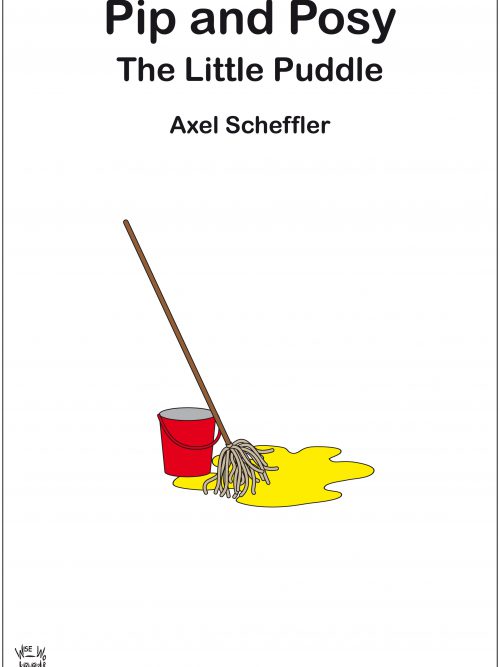 USING BOOKS TO ENHANCE A CHILD'S UNDERSTANDING AND INCREASE HIS/HER EXPRESSIVE LANGUAGE You can use a book to expand a child's • Vocabulary (magnificent, sail, squelchy, sniffing, pretending) • Understanding of concepts (e.g. cold, round, white, cosy, kind, sometimes) • Ability to understand questions Wise Words Scripts - offer clinicians, teachers and parents readily available questions designed specifically for each book. A script provides a variety of questions at each level of understanding for each page of the book. A teacher or clinician working with a group of children can tailor questions to each child's language ability. This script and other available scripts have been based on Marion Blank's Model of Classroom Language. Marion Blank recognised the importance of keeping questions and statements within a child’s level of understanding. The more concrete the statement or question, the easier it will be for the child to understand. As questions become more abstract, they become harder for children to answer. The Blank Model is divided into 4 levels of questioning, moving from the concrete (easiest) at Level 1 to the abstract (most difficult) at Level 4.
USING BOOKS TO ENHANCE A CHILD'S UNDERSTANDING AND INCREASE HIS/HER EXPRESSIVE LANGUAGE You can use a book to expand a child's • Vocabulary (magnificent, sail, squelchy, sniffing, pretending) • Understanding of concepts (e.g. cold, round, white, cosy, kind, sometimes) • Ability to understand questions Wise Words Scripts - offer clinicians, teachers and parents readily available questions designed specifically for each book. A script provides a variety of questions at each level of understanding for each page of the book. A teacher or clinician working with a group of children can tailor questions to each child's language ability. This script and other available scripts have been based on Marion Blank's Model of Classroom Language. Marion Blank recognised the importance of keeping questions and statements within a child’s level of understanding. The more concrete the statement or question, the easier it will be for the child to understand. As questions become more abstract, they become harder for children to answer. The Blank Model is divided into 4 levels of questioning, moving from the concrete (easiest) at Level 1 to the abstract (most difficult) at Level 4. -
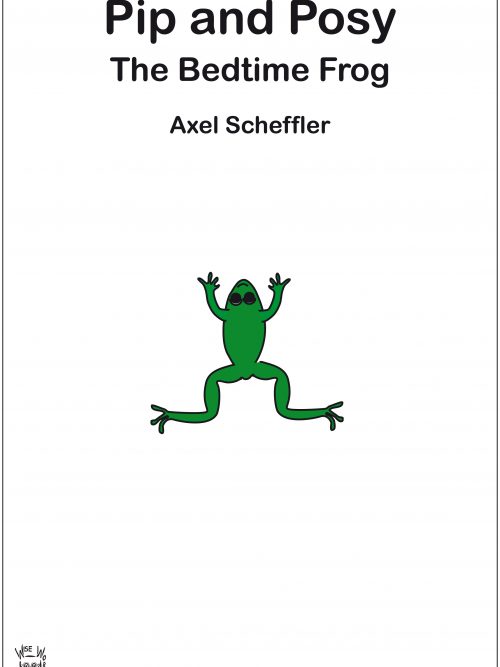 USING BOOKS TO ENHANCE A CHILD'S UNDERSTANDING AND INCREASE HIS/HER EXPRESSIVE LANGUAGE You can use a book to expand a child's • Vocabulary (stool, kennel, basket, sty, reaching, searching) • Understanding of concepts (e.g. big - little, wet - dry, nearly, scary, funny) • Ability to understand questions Wise Words Scripts - offer clinicians, teachers and parents readily available questions designed specifically for each book. A script provides a variety of questions at each level of understanding for each page of the book. A teacher or clinician working with a group of children can tailor questions to each child's language ability. This script and other available scripts have been based on Marion Blank's Model of Classroom Language. Marion Blank recognised the importance of keeping questions and statements within a child’s level of understanding. The more concrete the statement or question, the easier it will be for the child to understand. As questions become more abstract, they become harder for children to answer. The Blank Model is divided into 4 levels of questioning, moving from the concrete (easiest) at Level 1 to the abstract (most difficult) at Level 4.
USING BOOKS TO ENHANCE A CHILD'S UNDERSTANDING AND INCREASE HIS/HER EXPRESSIVE LANGUAGE You can use a book to expand a child's • Vocabulary (stool, kennel, basket, sty, reaching, searching) • Understanding of concepts (e.g. big - little, wet - dry, nearly, scary, funny) • Ability to understand questions Wise Words Scripts - offer clinicians, teachers and parents readily available questions designed specifically for each book. A script provides a variety of questions at each level of understanding for each page of the book. A teacher or clinician working with a group of children can tailor questions to each child's language ability. This script and other available scripts have been based on Marion Blank's Model of Classroom Language. Marion Blank recognised the importance of keeping questions and statements within a child’s level of understanding. The more concrete the statement or question, the easier it will be for the child to understand. As questions become more abstract, they become harder for children to answer. The Blank Model is divided into 4 levels of questioning, moving from the concrete (easiest) at Level 1 to the abstract (most difficult) at Level 4. -
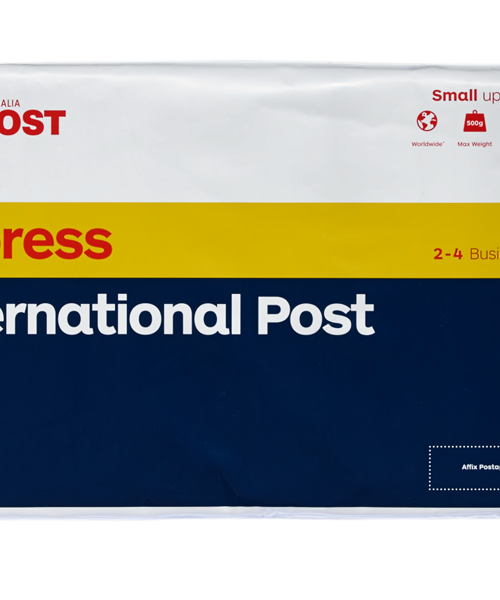 Shipping - International Express Post $55.00 guarantees delivery in 2 to 4 business days to metro areas of major international cities. Although Australia Post Airmail Service guarantees reliable delivery to over 200 countries, customs procedures in other countries have been known to delay the delivery of packages.
Shipping - International Express Post $55.00 guarantees delivery in 2 to 4 business days to metro areas of major international cities. Although Australia Post Airmail Service guarantees reliable delivery to over 200 countries, customs procedures in other countries have been known to delay the delivery of packages. -
 Domestic Express Post Express post guarantees next business day delivery if a delivery address is within the Express Post network on a business day (Monday to Friday). This covers 80% of Australian business addresses, private addresses and Post Office Boxes. The service operates between all capital cities (except Darwin and in Perth CBD only) and some major centres. If the address is outside Express Post network, it will be sent via the fastest possible transport links, but it won't be delivered by the next day. Although Australia Post Airmail Service guarantees reliable delivery to over 200 countries, customs procedures in other countries have been known to delay the delivery of packages.
Domestic Express Post Express post guarantees next business day delivery if a delivery address is within the Express Post network on a business day (Monday to Friday). This covers 80% of Australian business addresses, private addresses and Post Office Boxes. The service operates between all capital cities (except Darwin and in Perth CBD only) and some major centres. If the address is outside Express Post network, it will be sent via the fastest possible transport links, but it won't be delivered by the next day. Although Australia Post Airmail Service guarantees reliable delivery to over 200 countries, customs procedures in other countries have been known to delay the delivery of packages. -
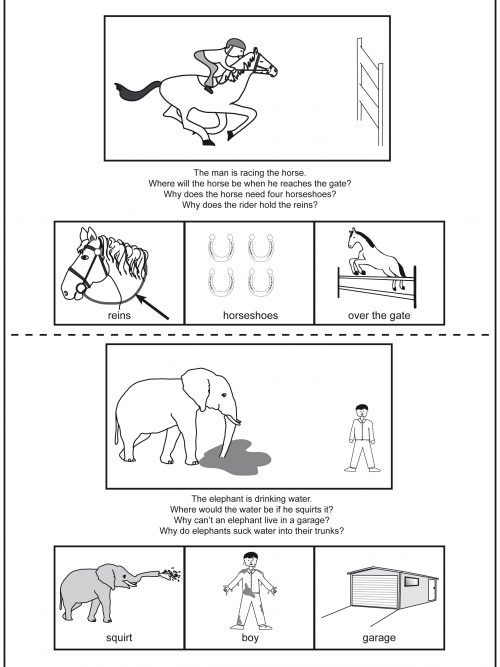
Level 4
Predicting changes in position “What will you see if ...?” “Where will the ... be if ...?” Explaining the means to a goal “Why did the ...?” “Why should he ...?” Explaining obstacles to an action “Why can’t the helicopter ...?” “Why won’t the ...?” This program can be used with both readers and non-readers alike. If a child can read, it is suggested that the ‘without words’ version is used to avoid reliance on the written prompt. Parents or carers have access to the written label in order to guide their child with each task. It is important for the parent, teacher or clinician to lead the child towards the salient features of the presented information. Point to a picture, parts of a picture or break down the statements into simple content in order to give the child an opportunity to understand. If your child appears to be struggling with the questions, it is essential to talk more but at a simple level of understanding so that the child reaches the appropriate response by himself. Rephrasing the information will ensure that he is able to draw on past experiences or make inferences. This should help him to understand the question and then offer a solution. -
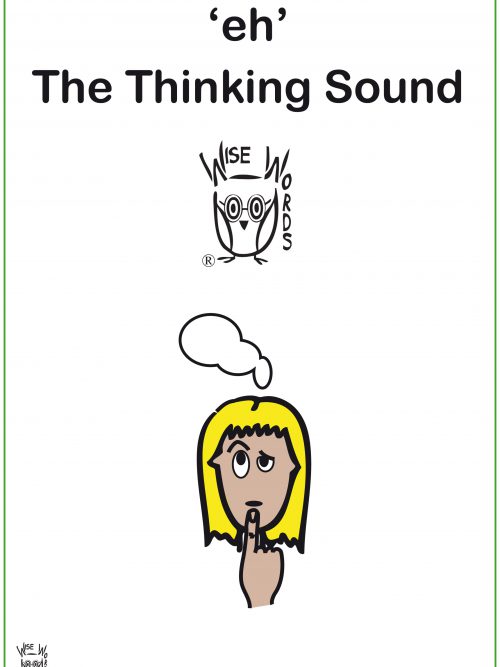
'The Thinking Sound'
Wise Words Articulation Programs - support clinicians, teachers and parents to establish 'new' (correct) sounds into their child's speech. Each program supplies detailed instructions for every task and game. The instructions have been written in a clear manner for a non-professional to follow. Numerous games are provided. These games have been designed to be fun and interactive and will ensure that the child remains engaged and compliant. Playing the games will help the child to generalise the ‘new’ sound into their everyday speech.

